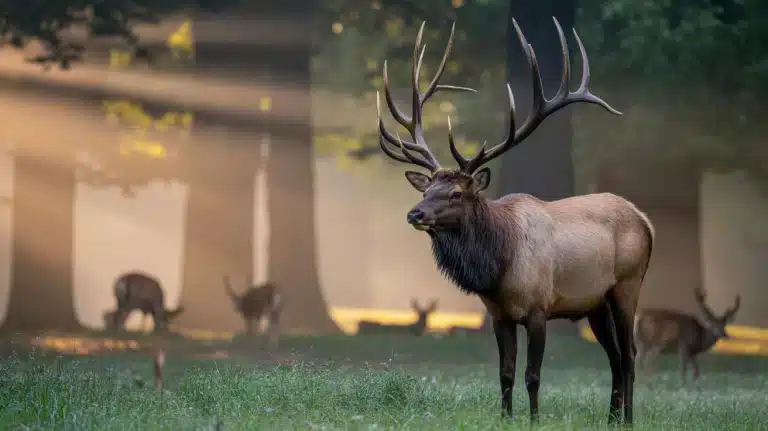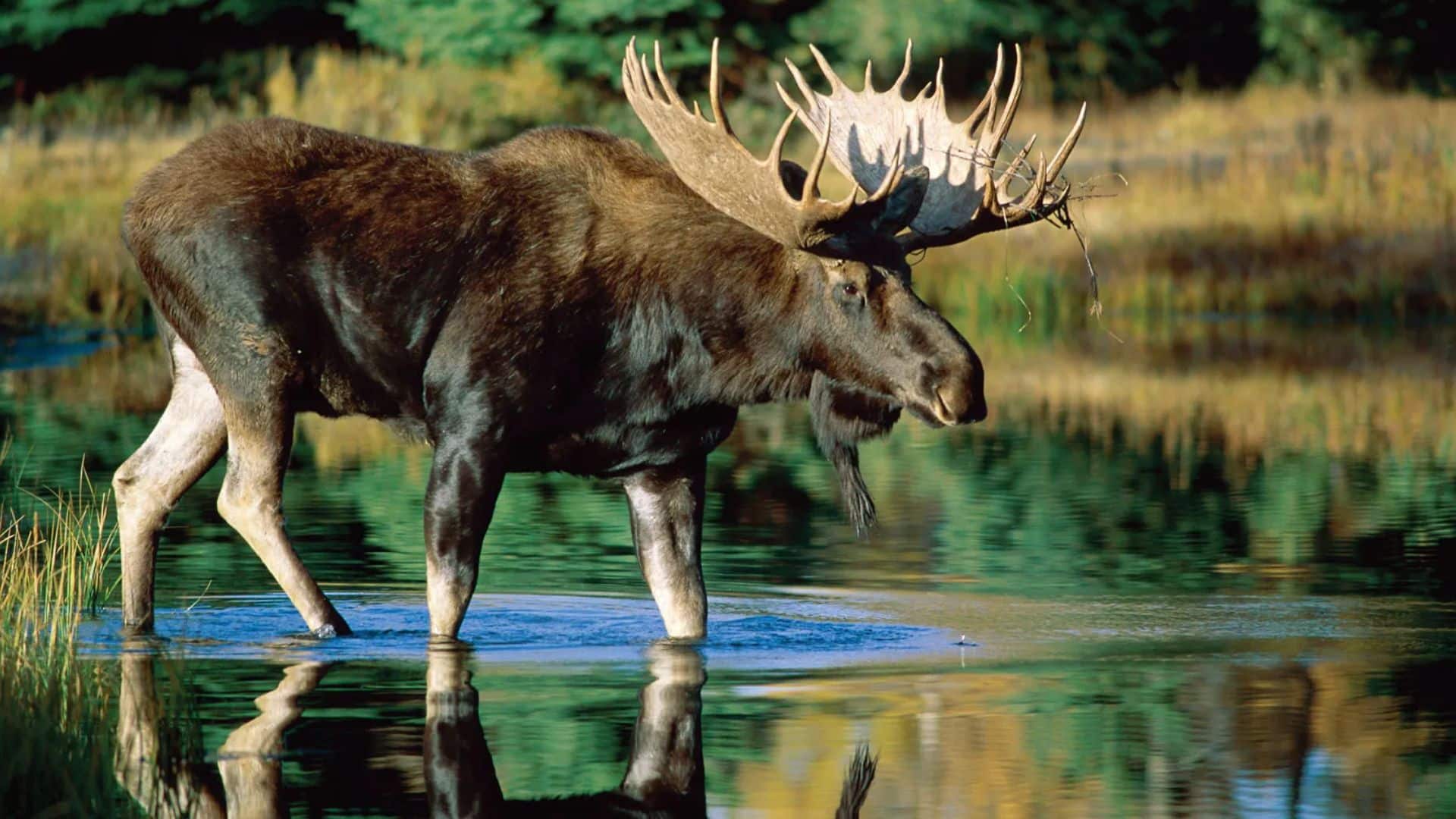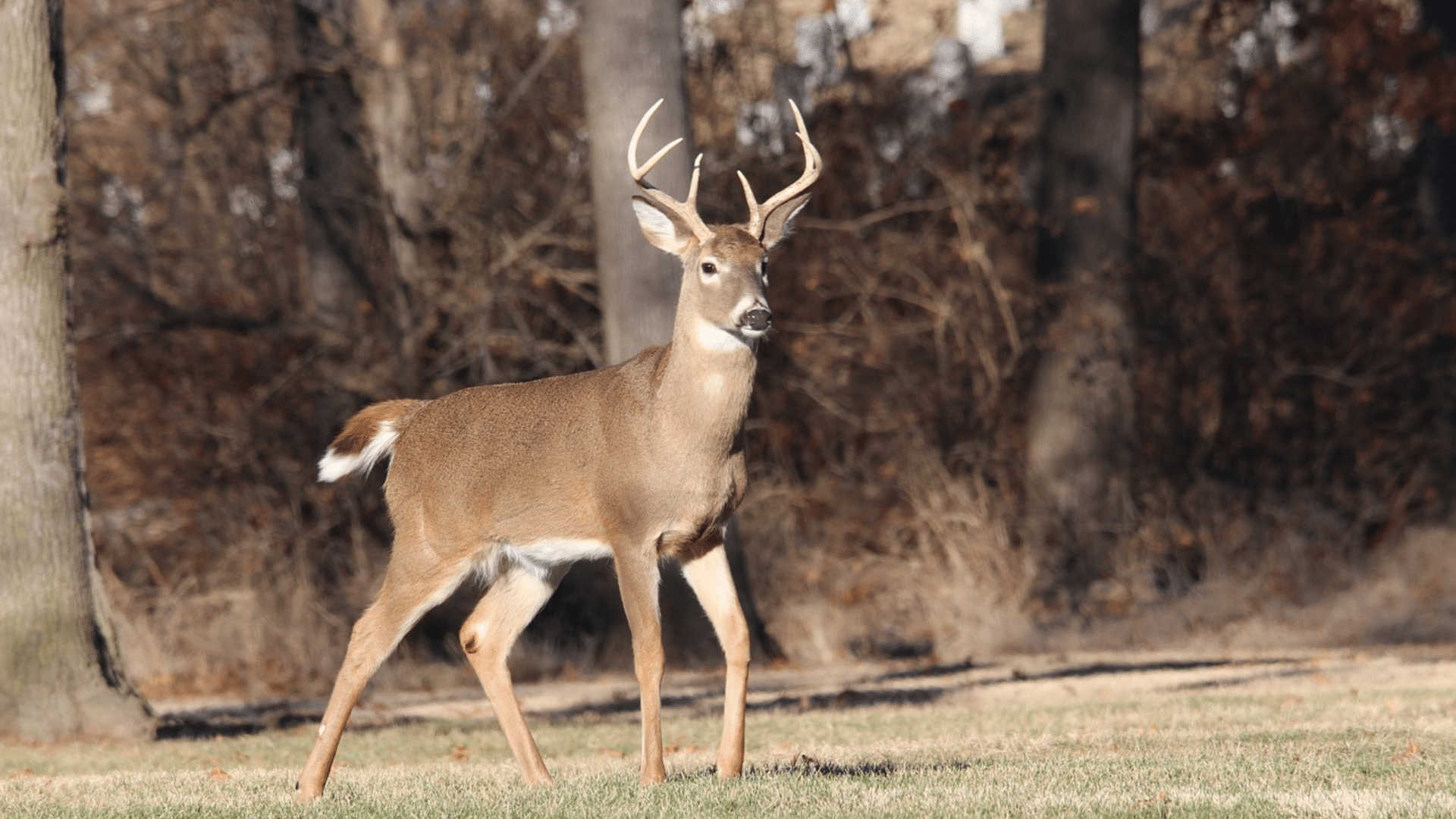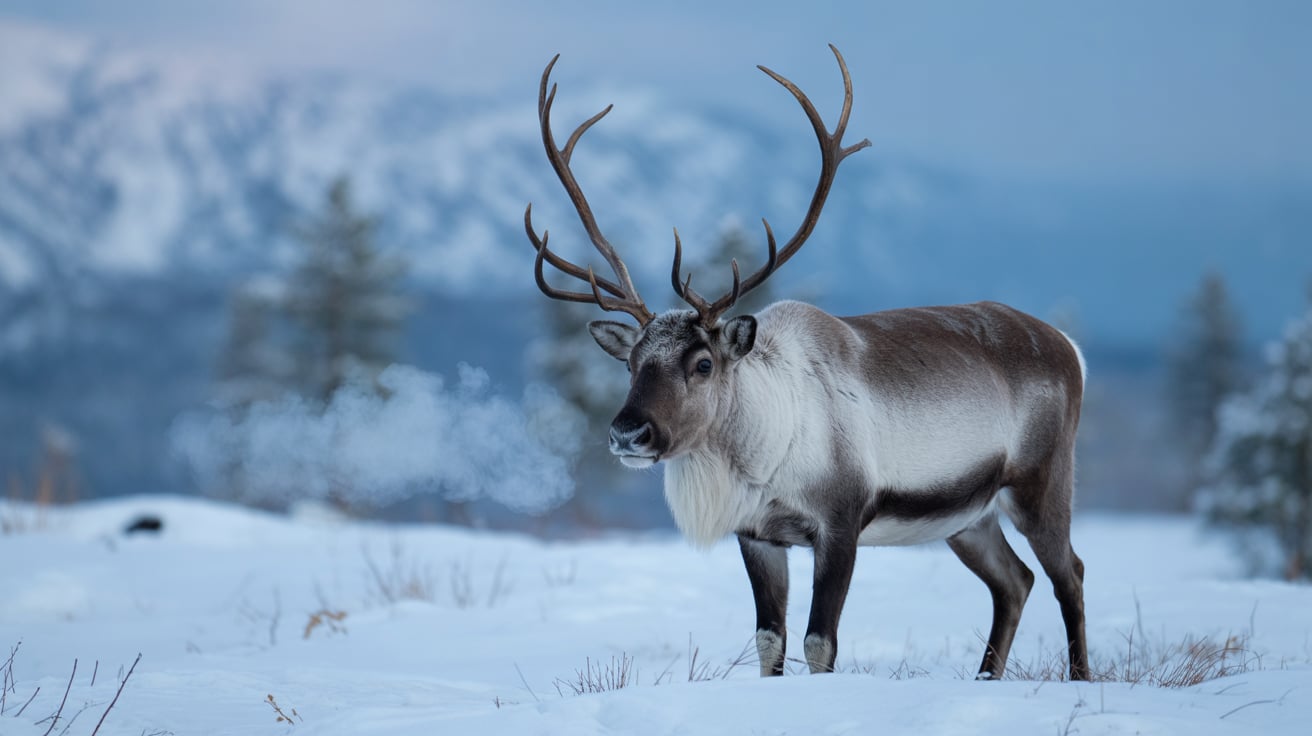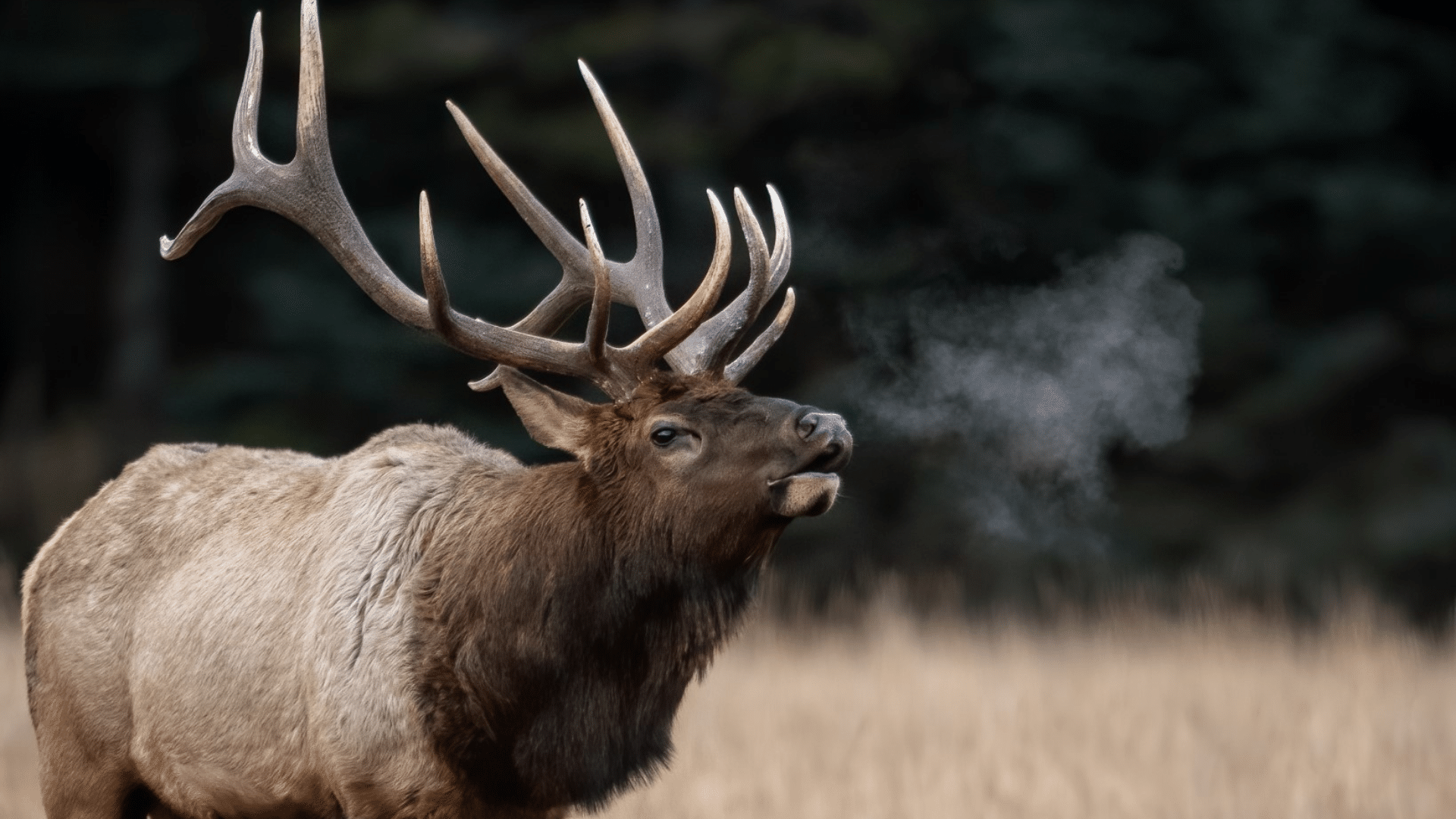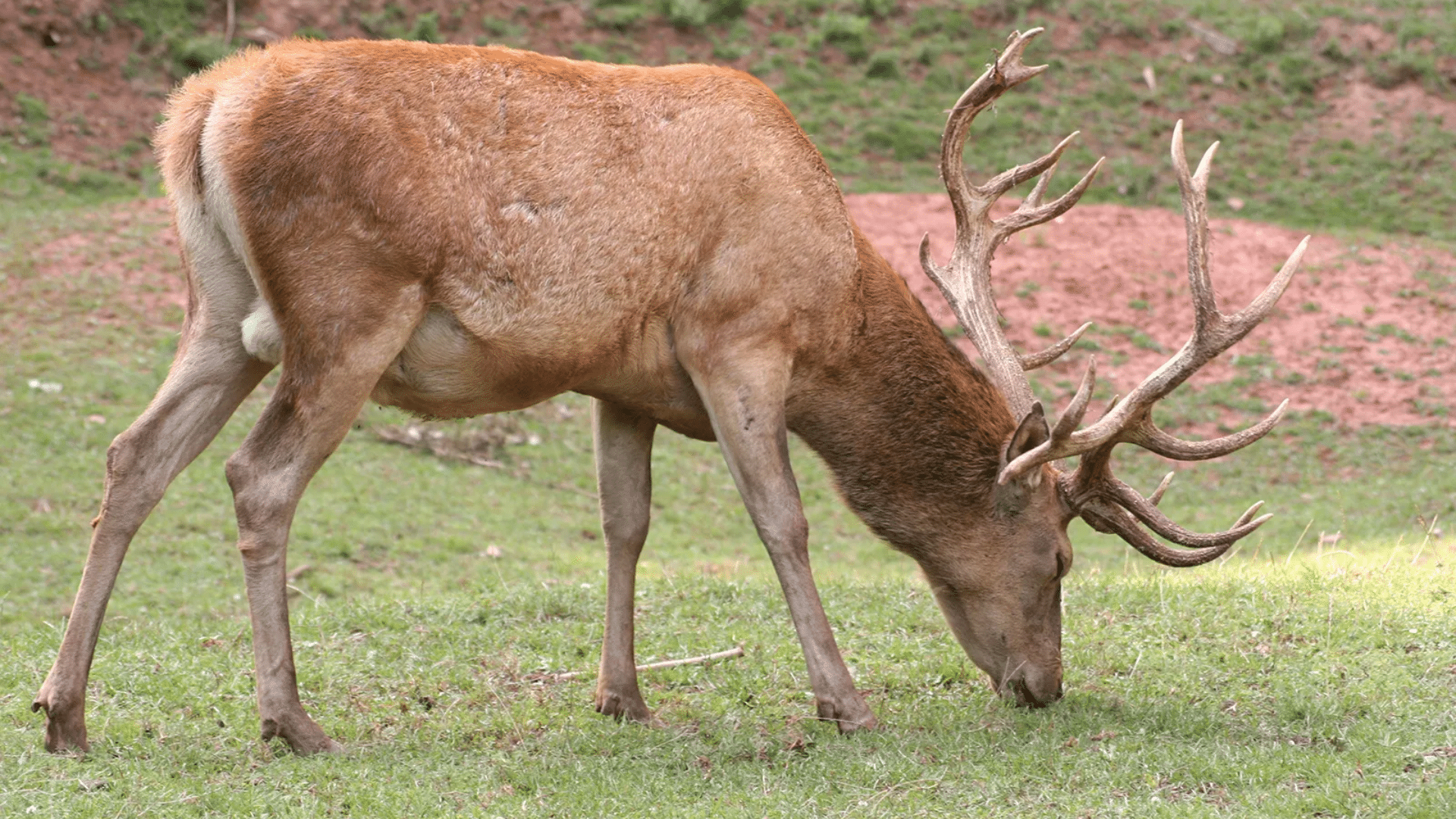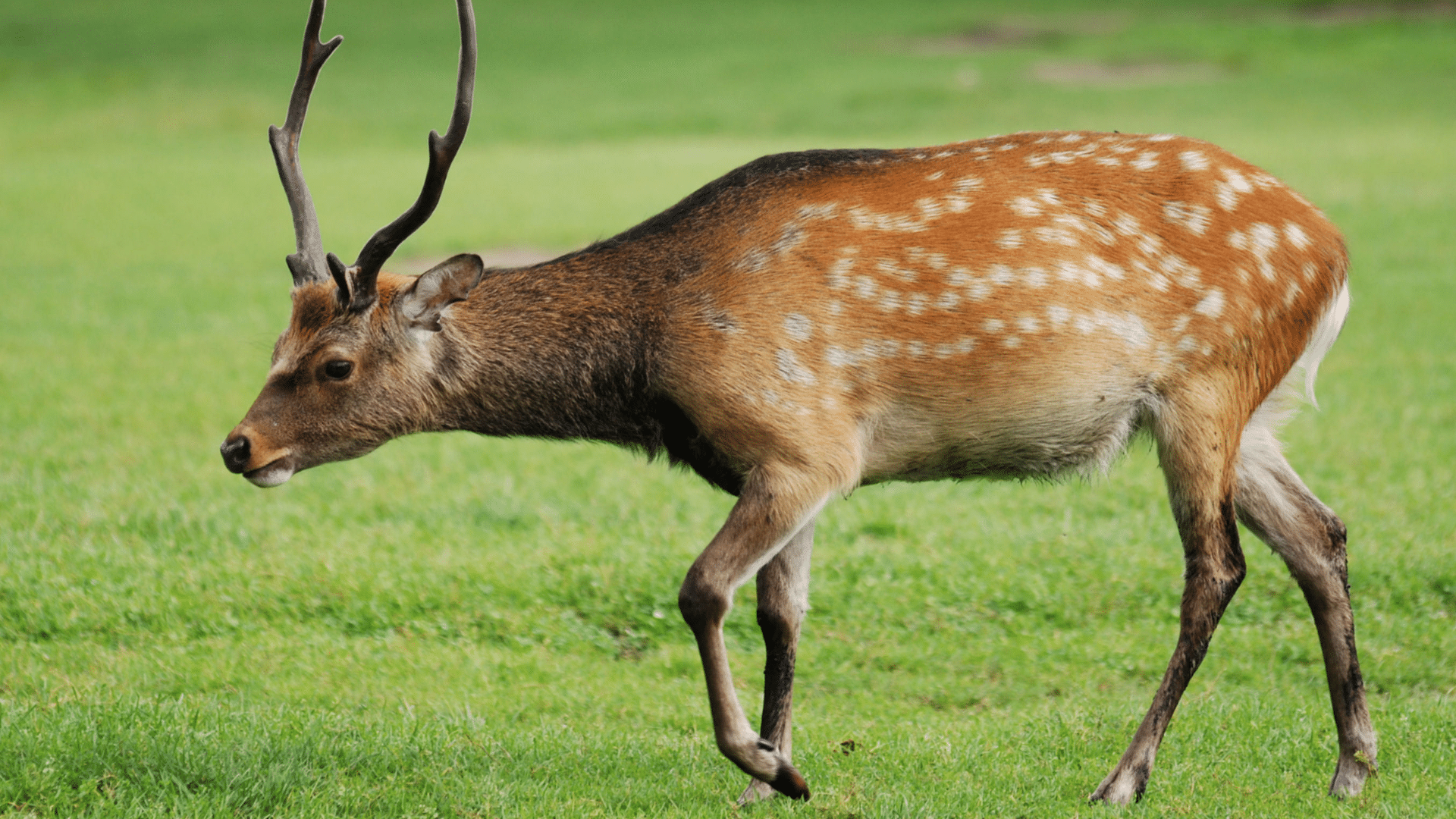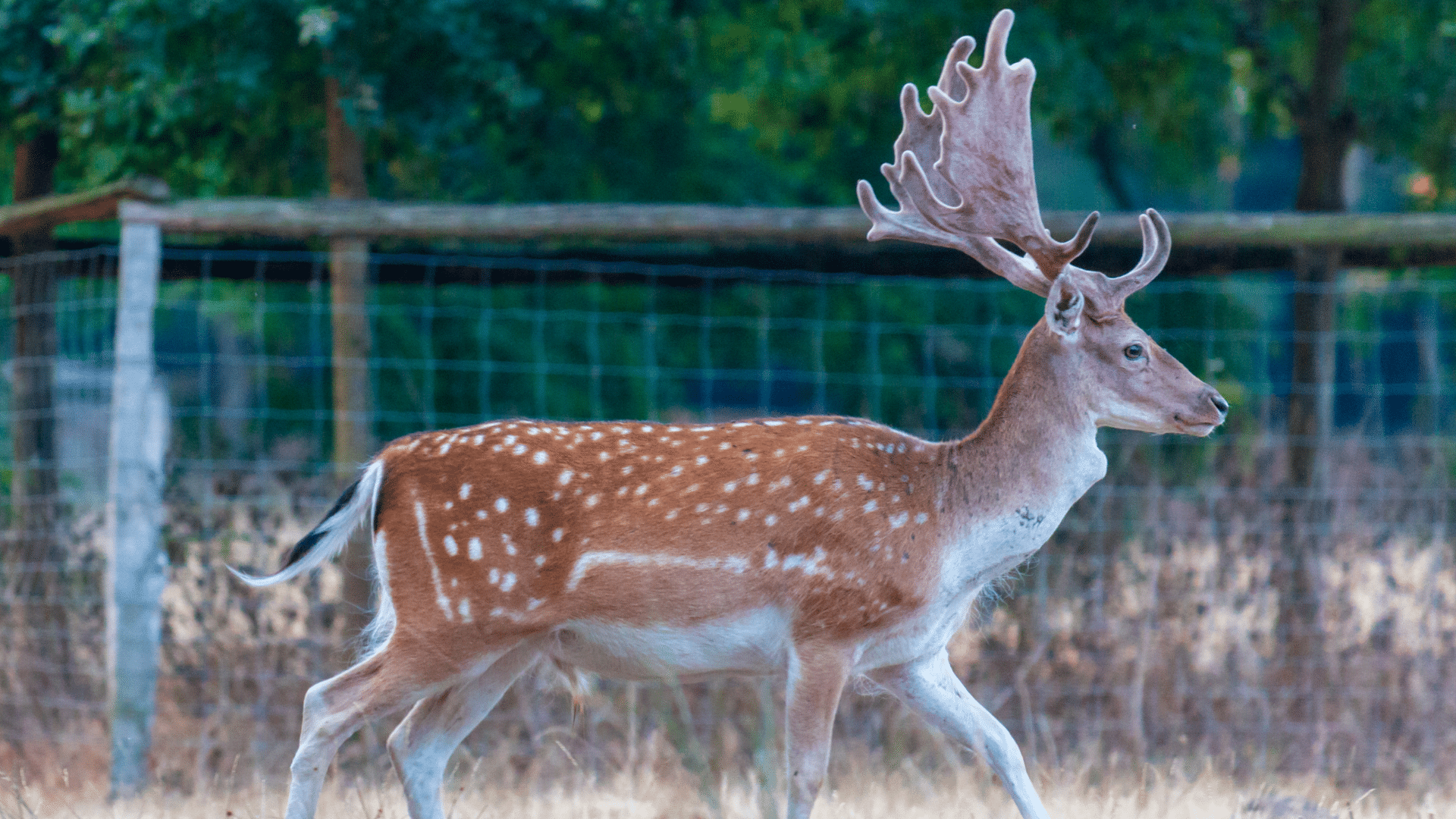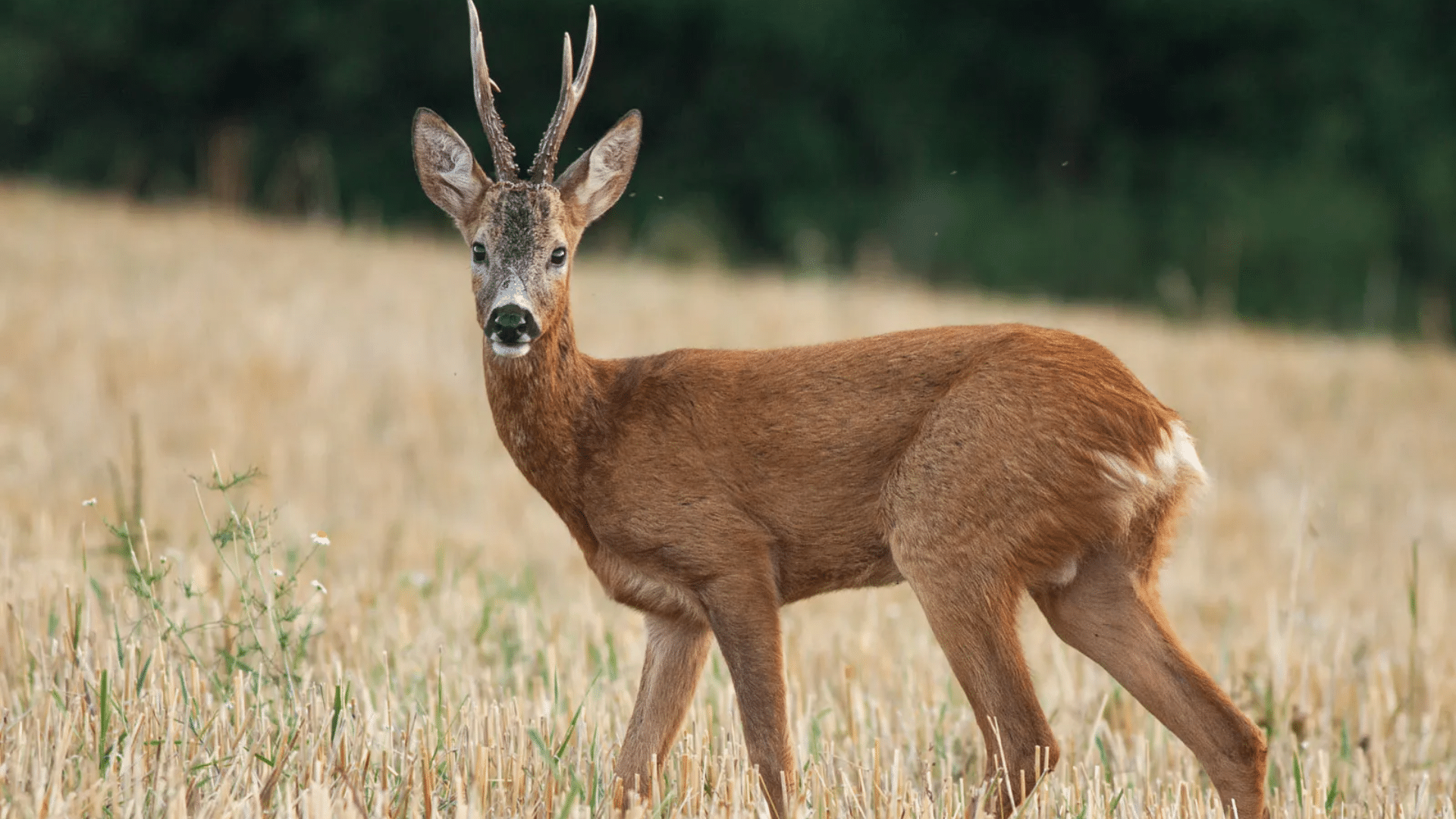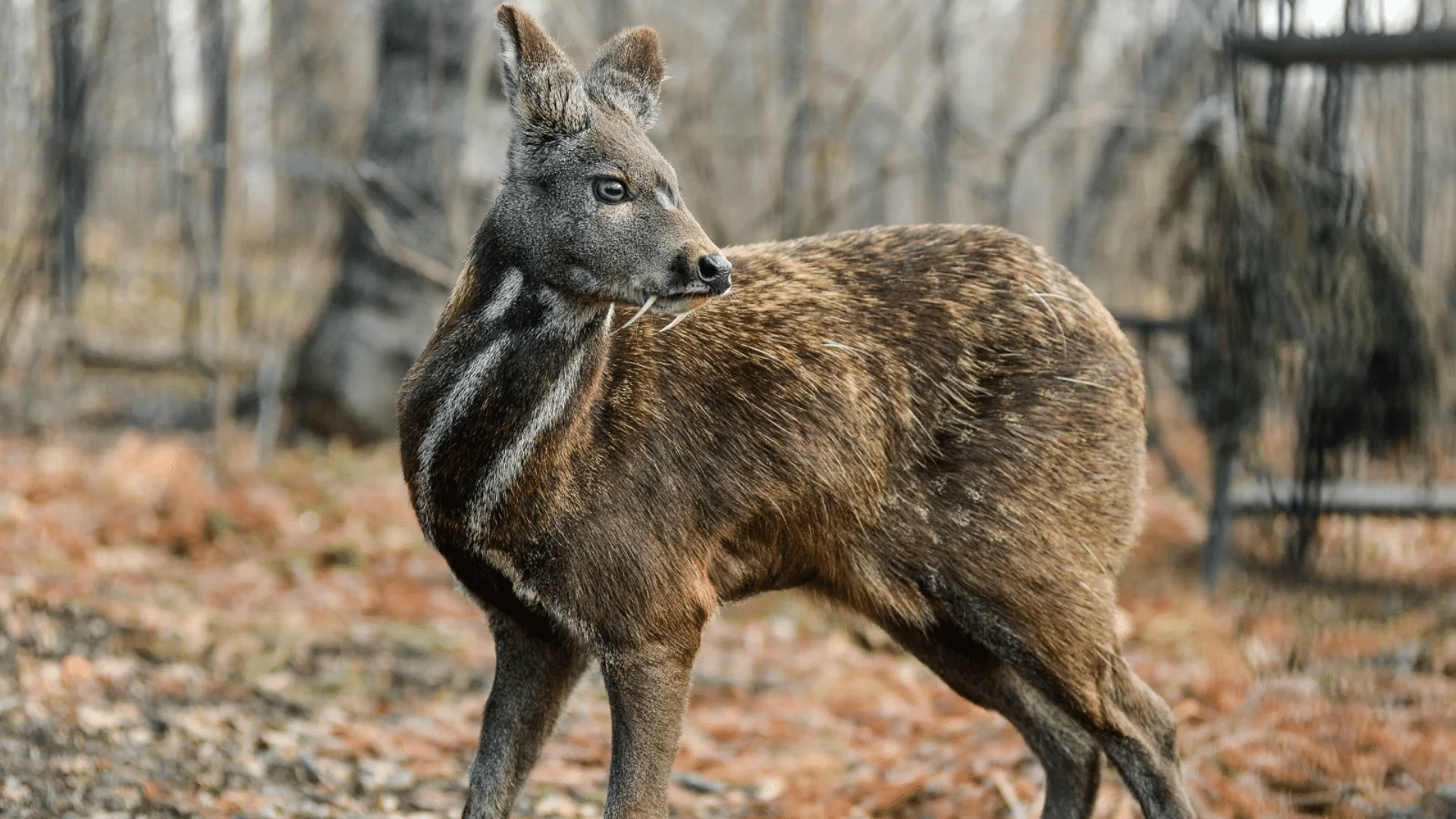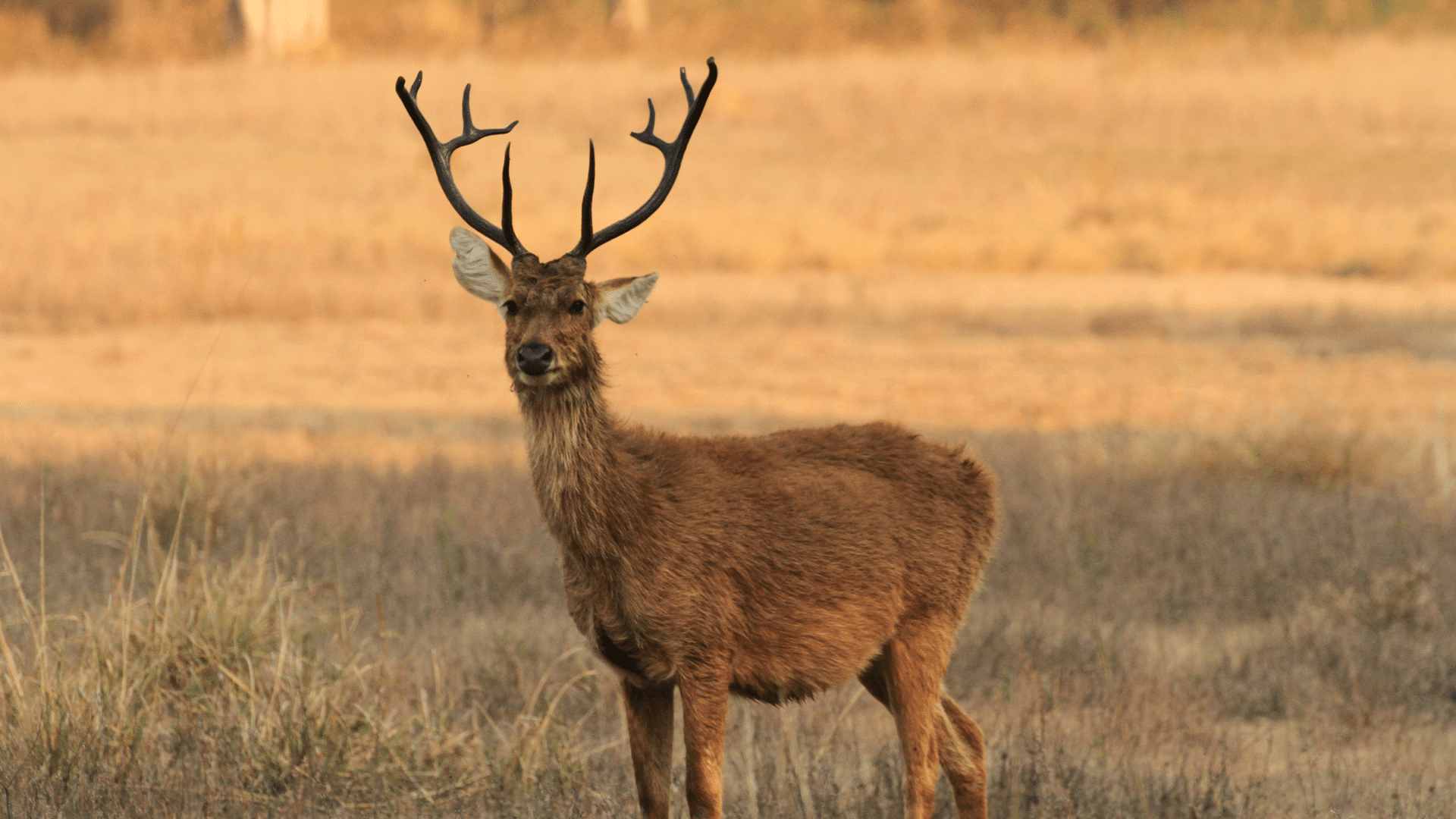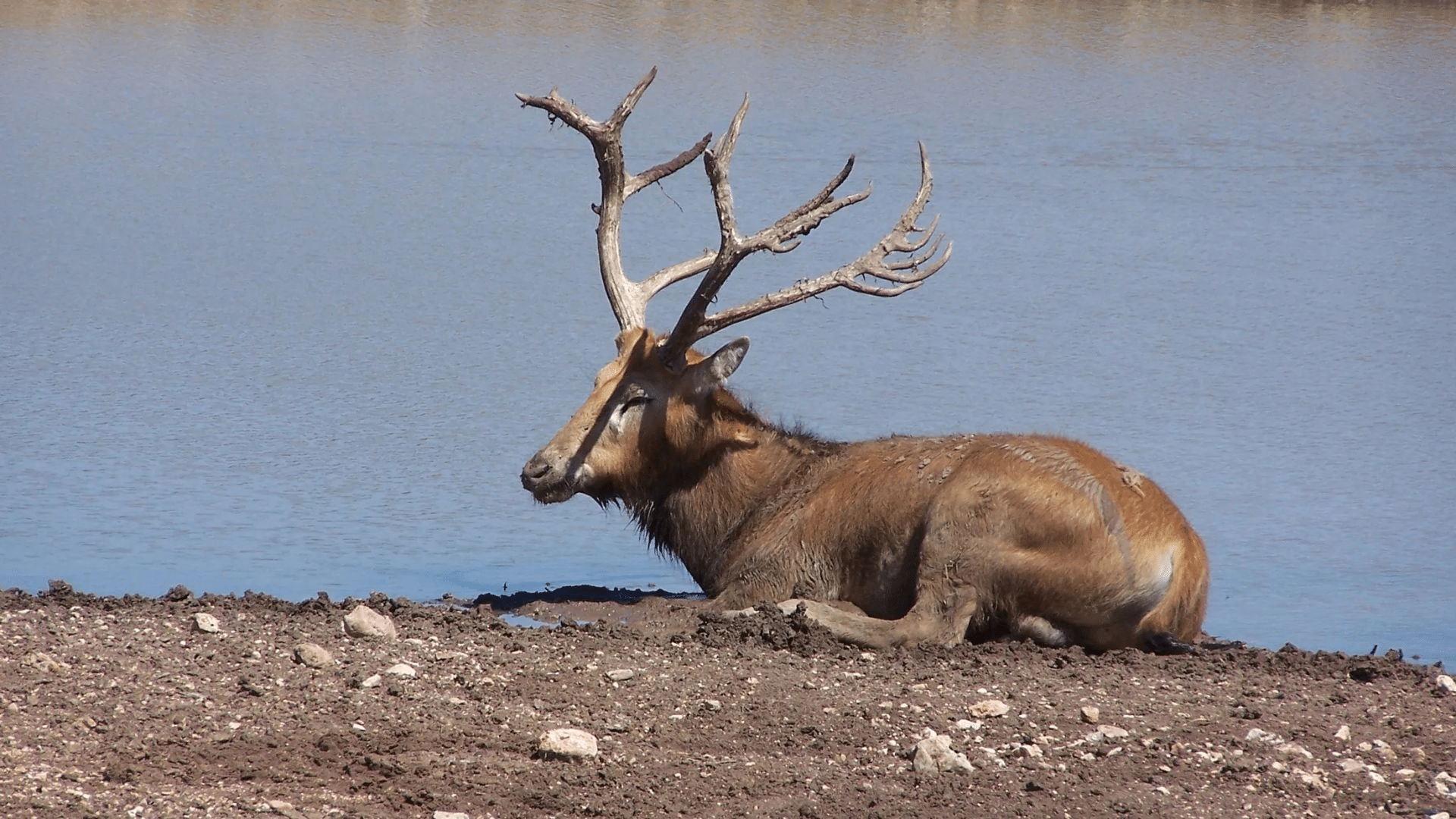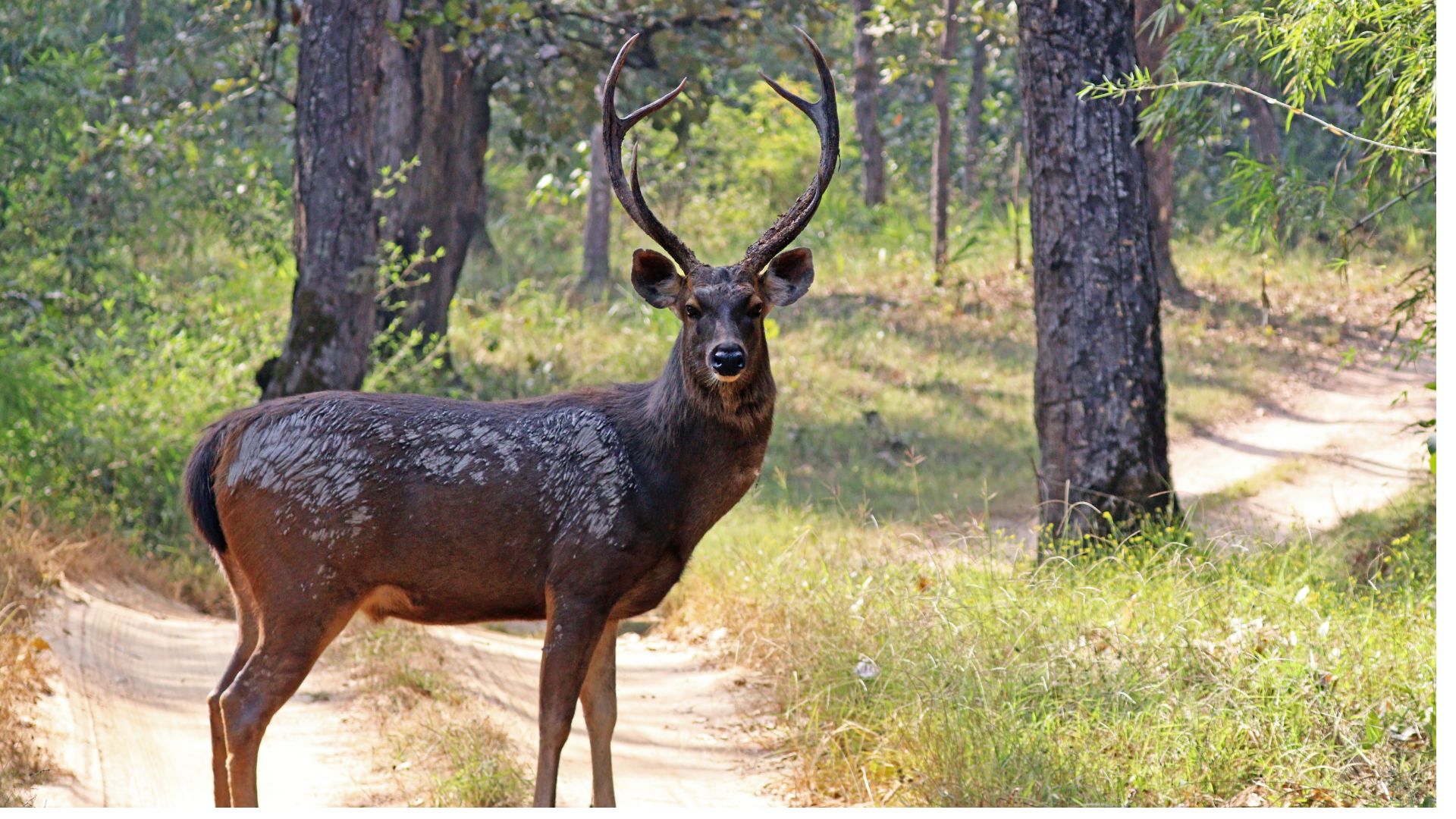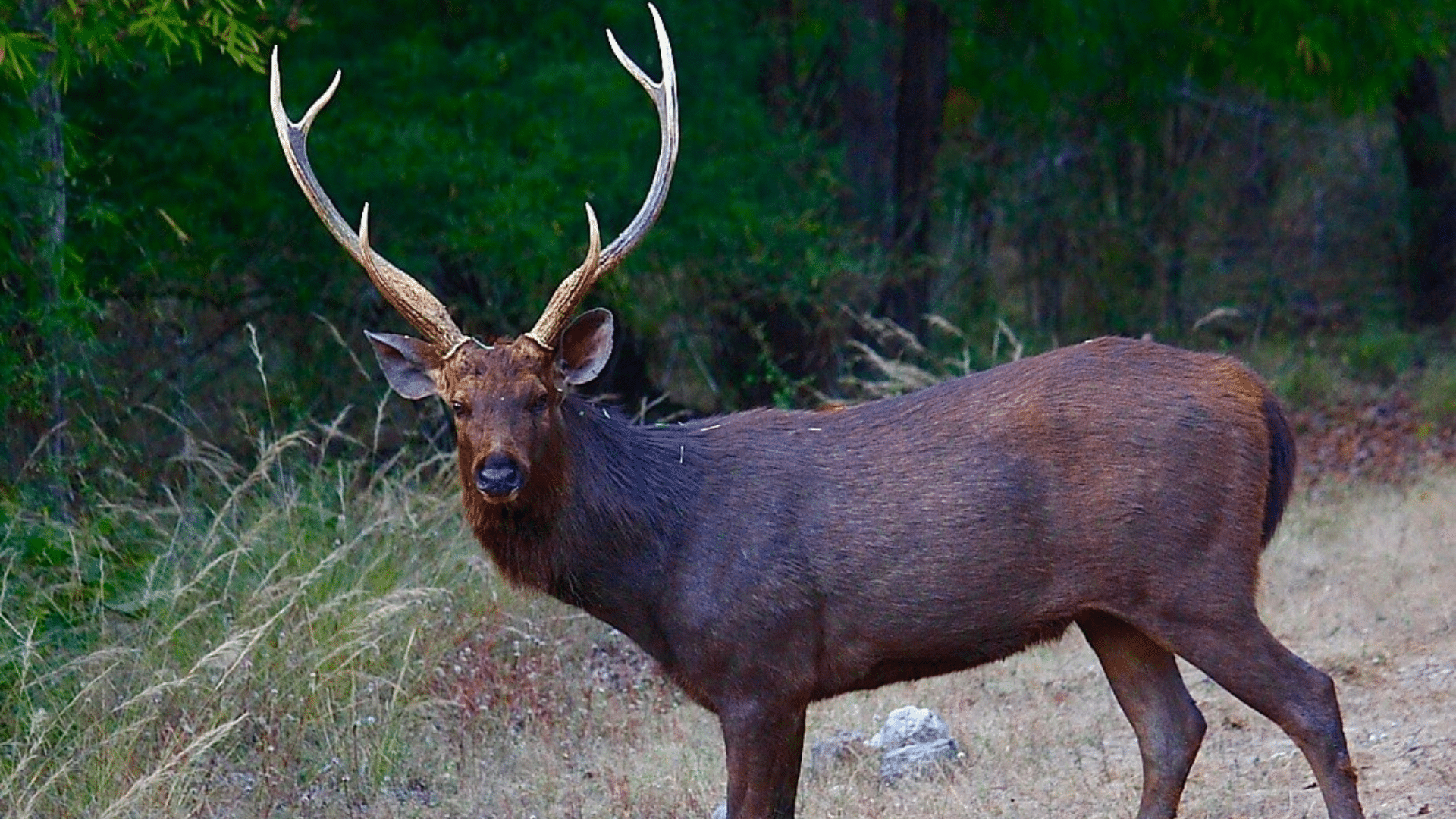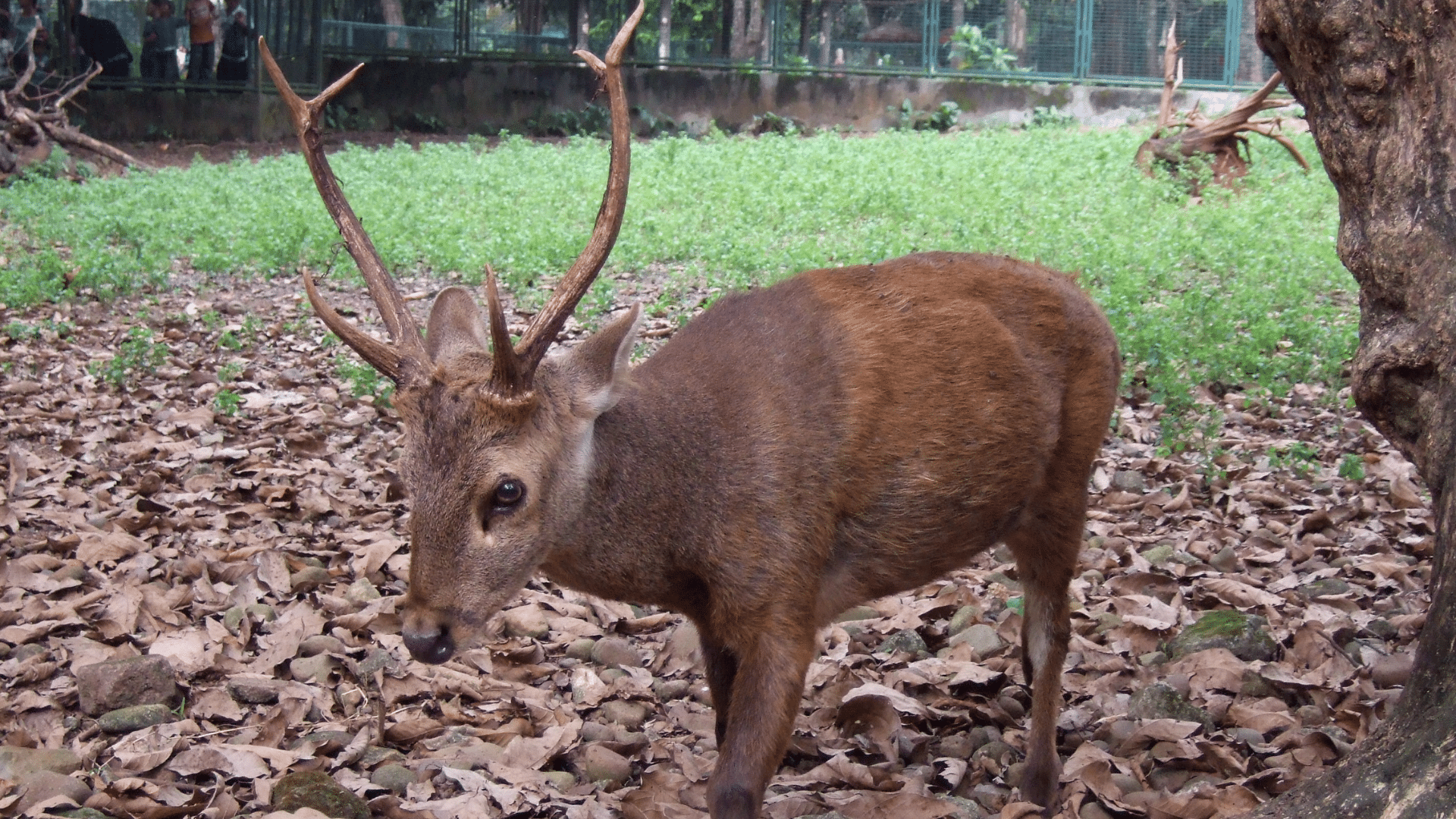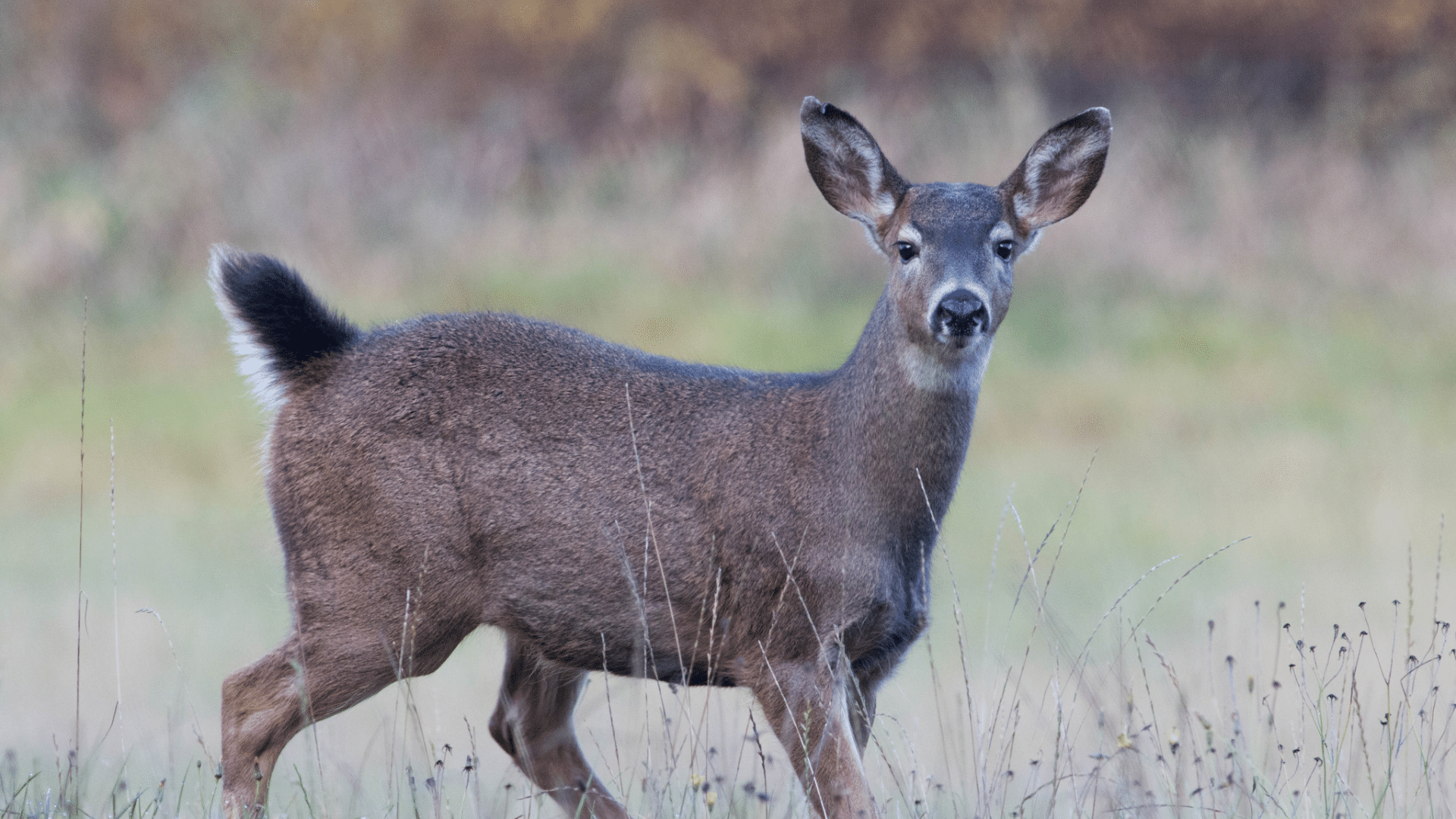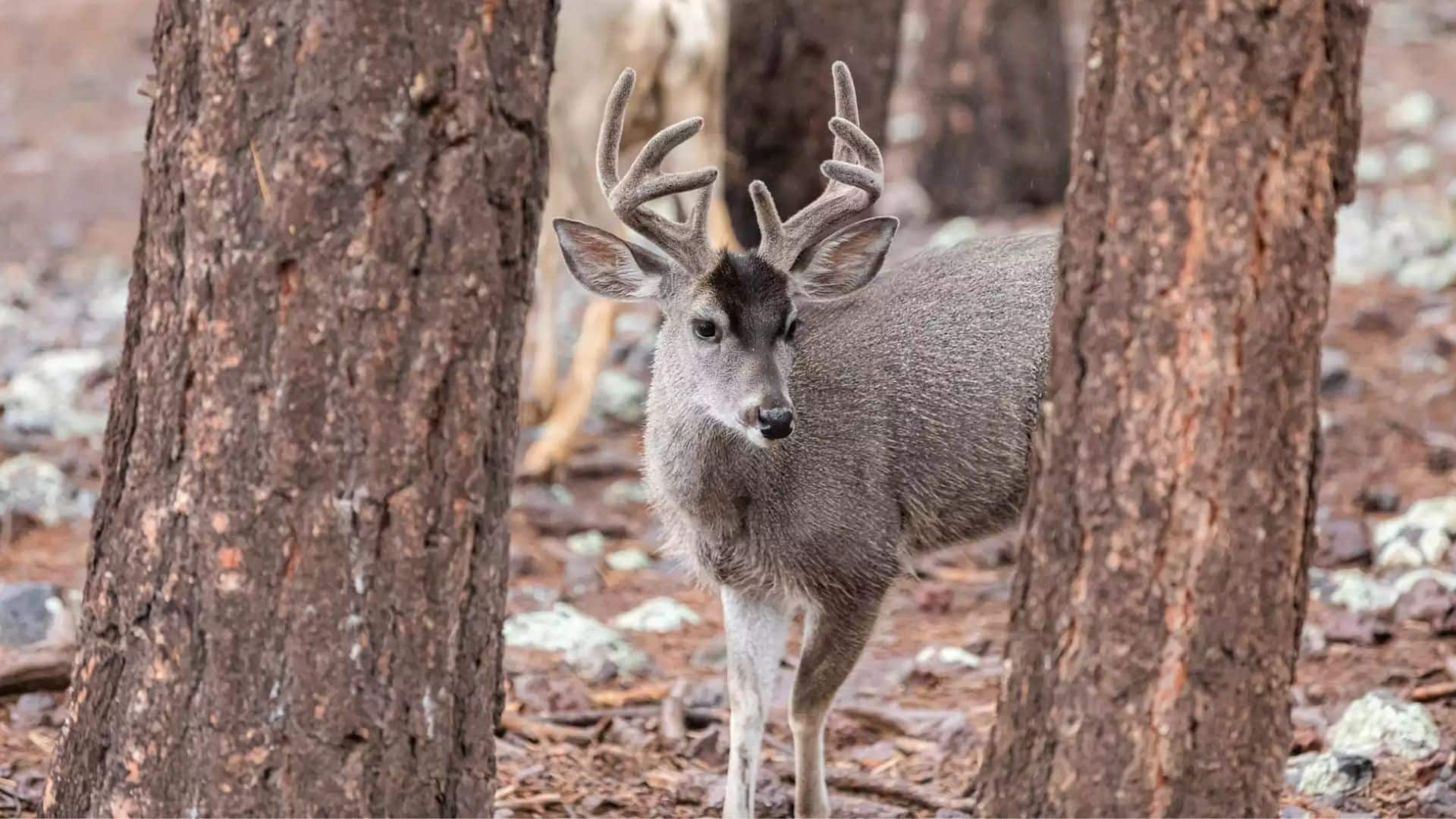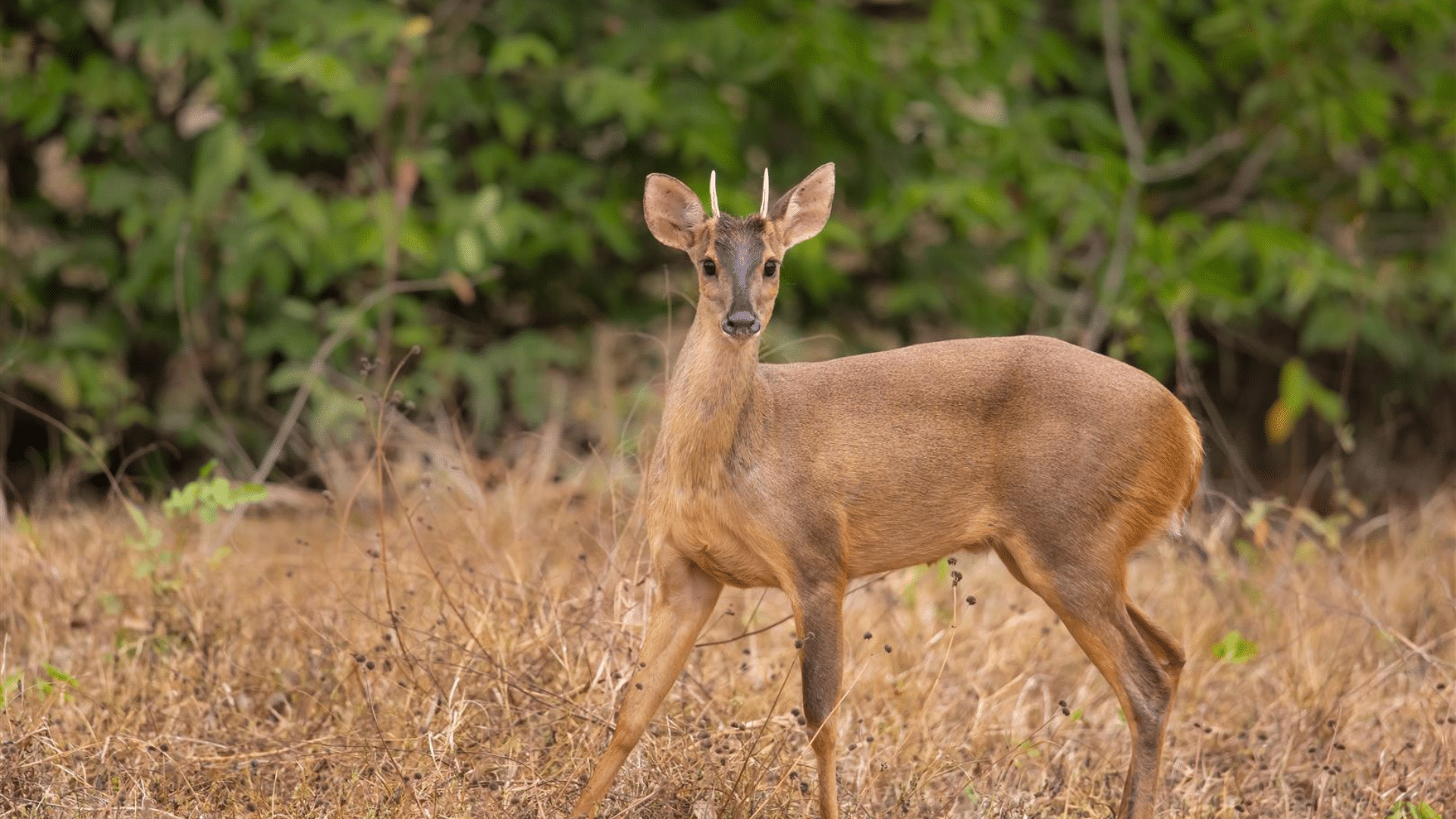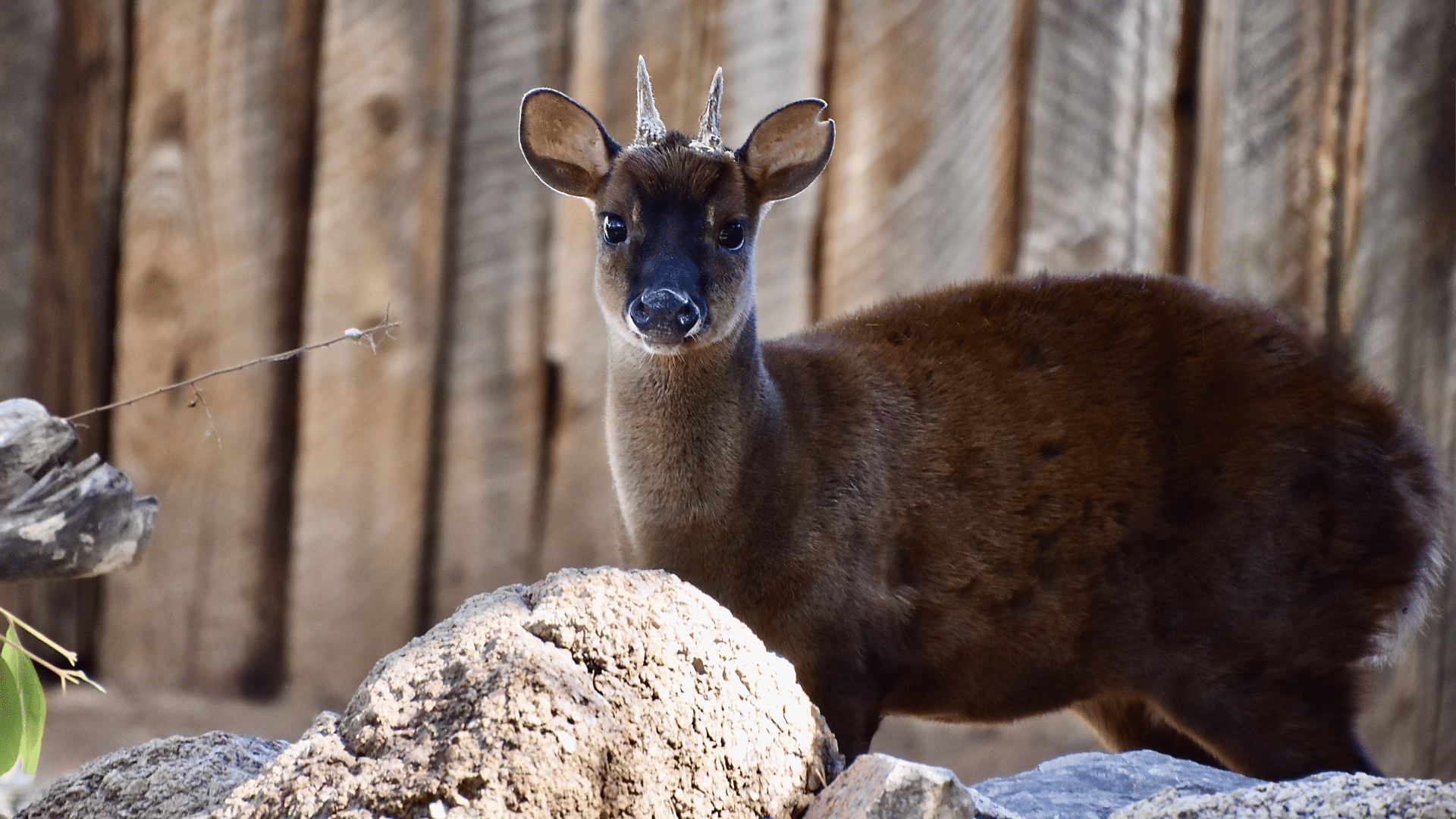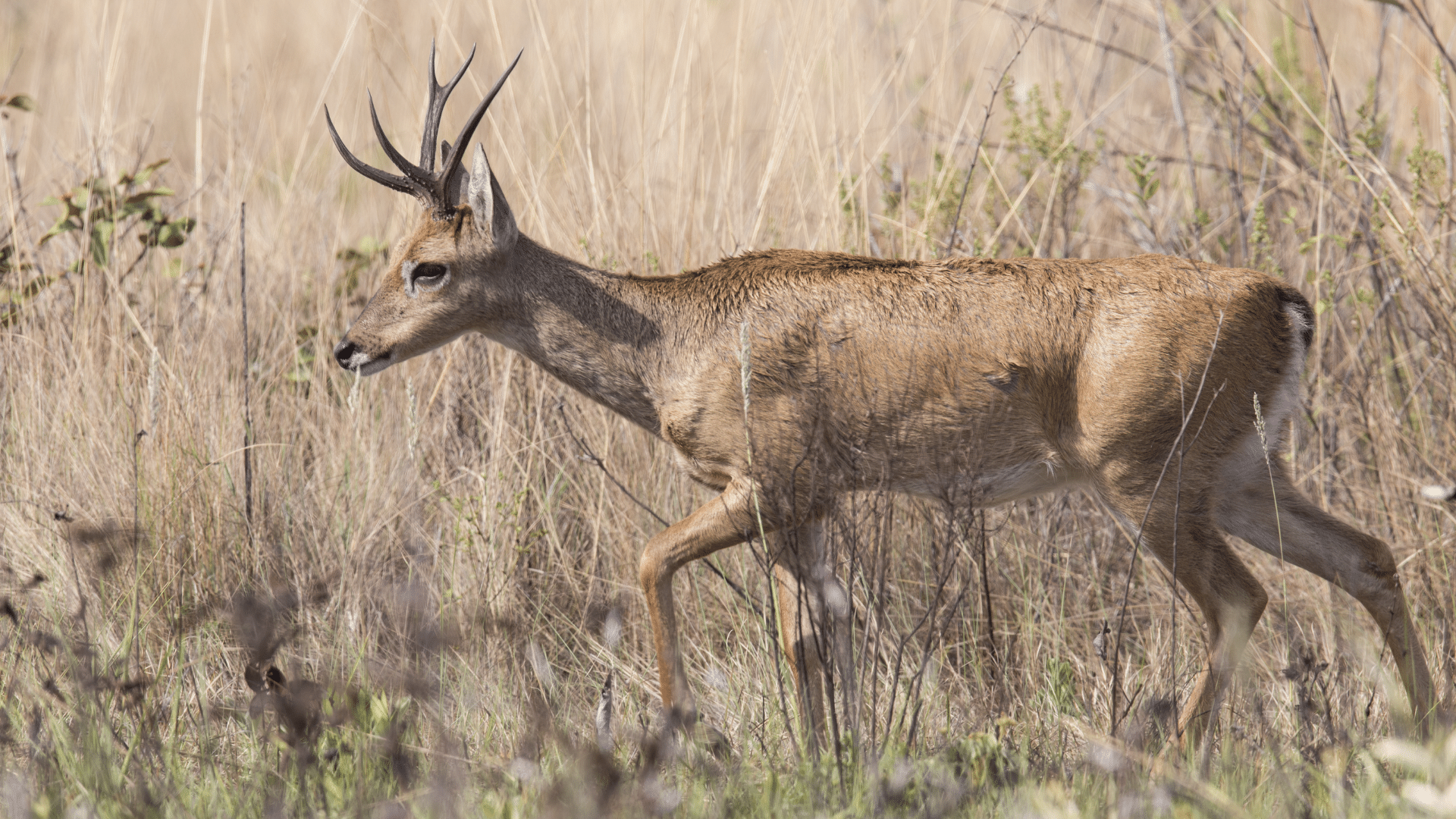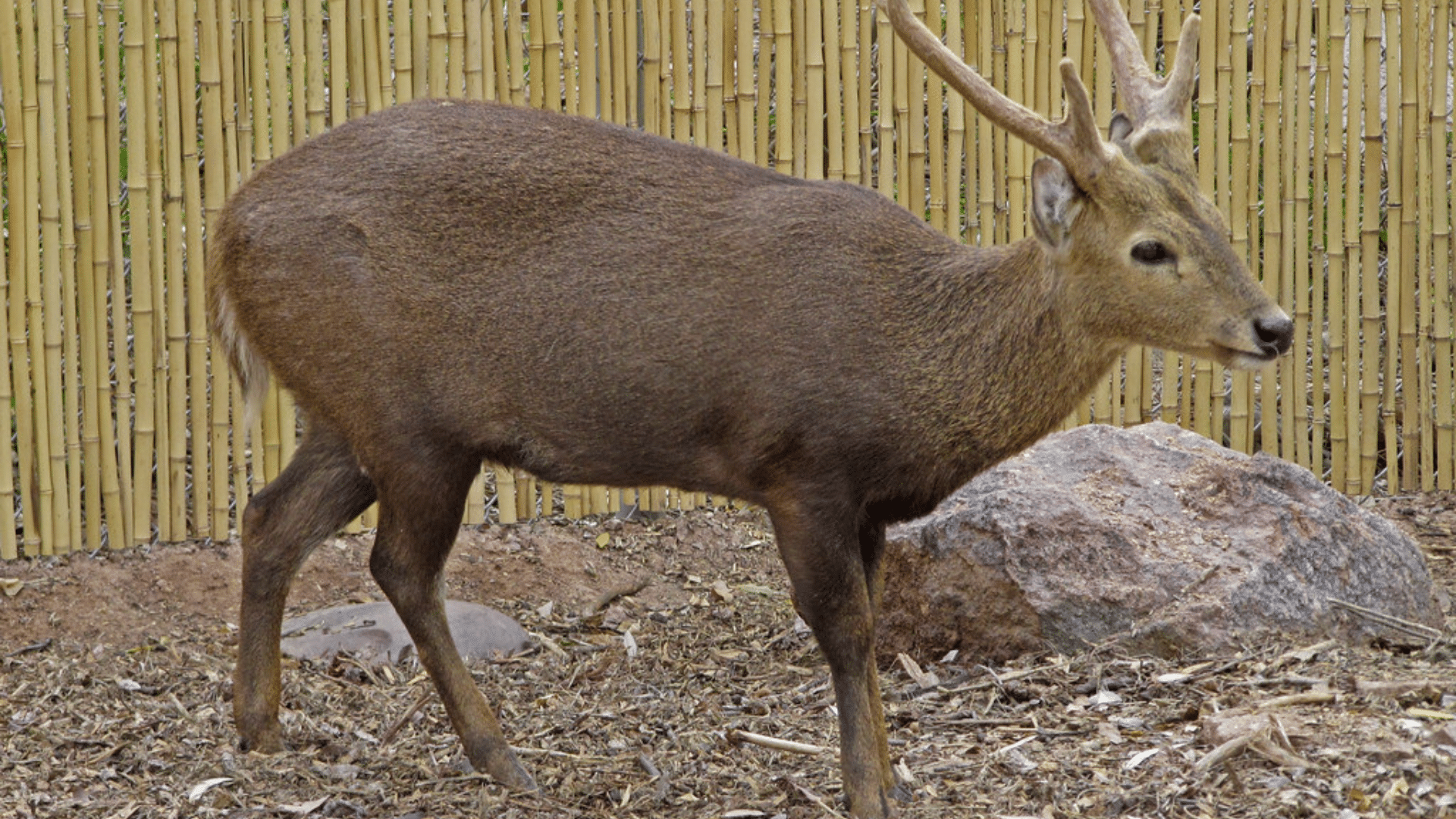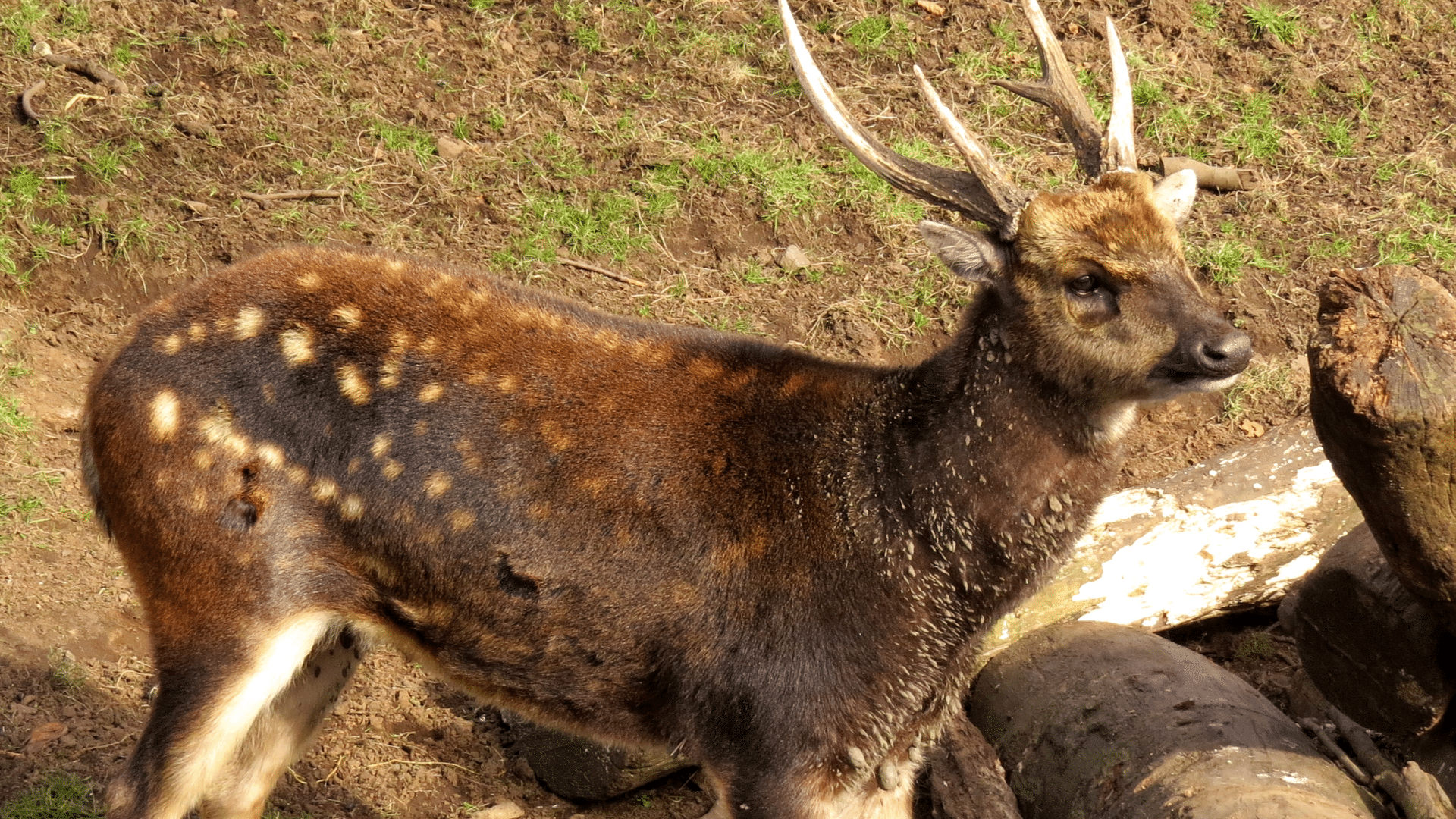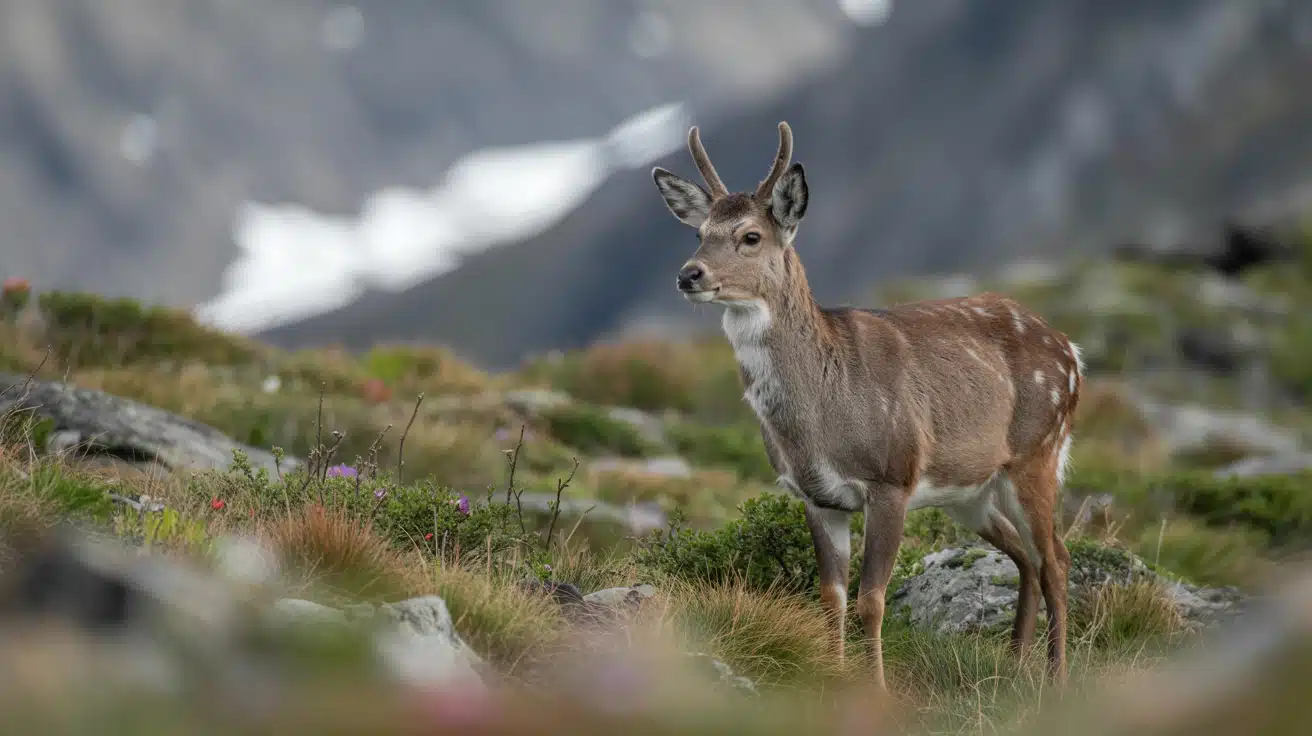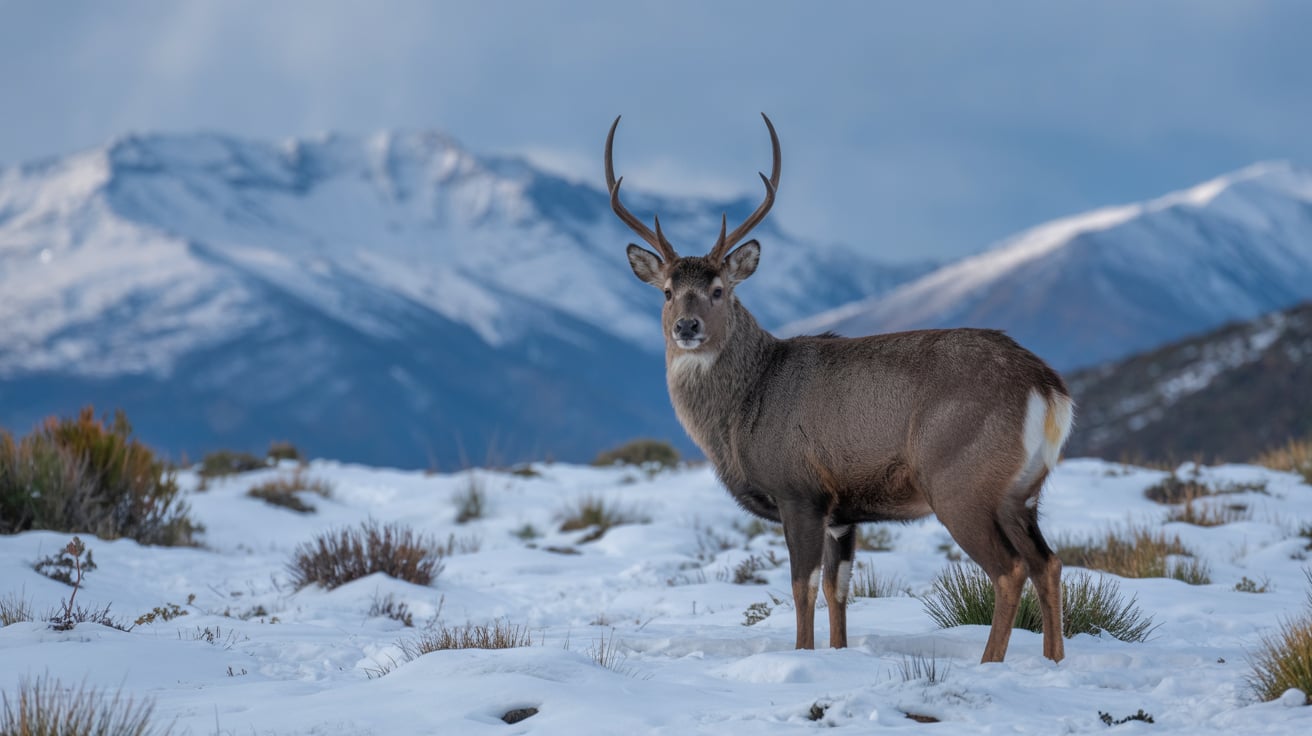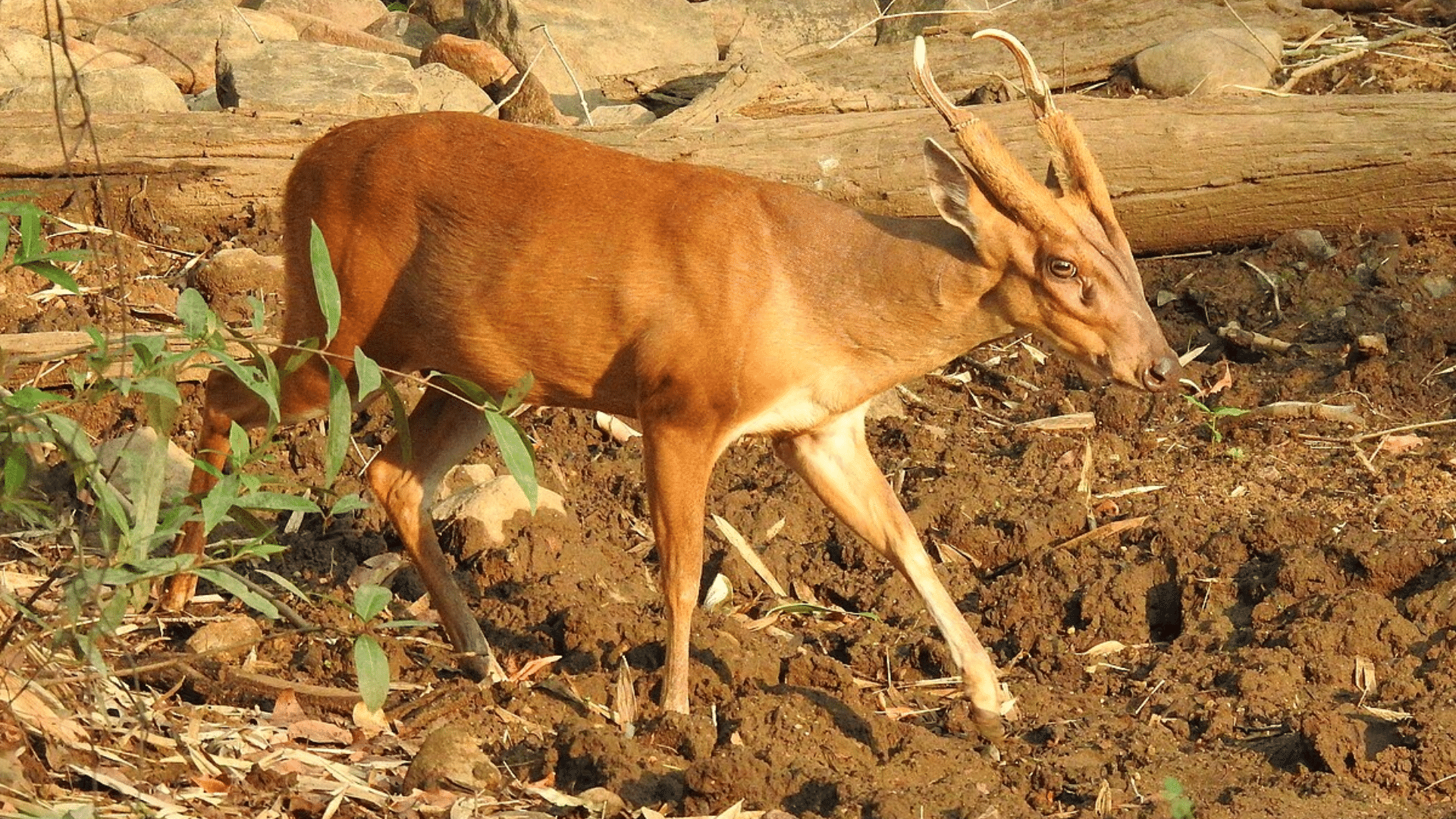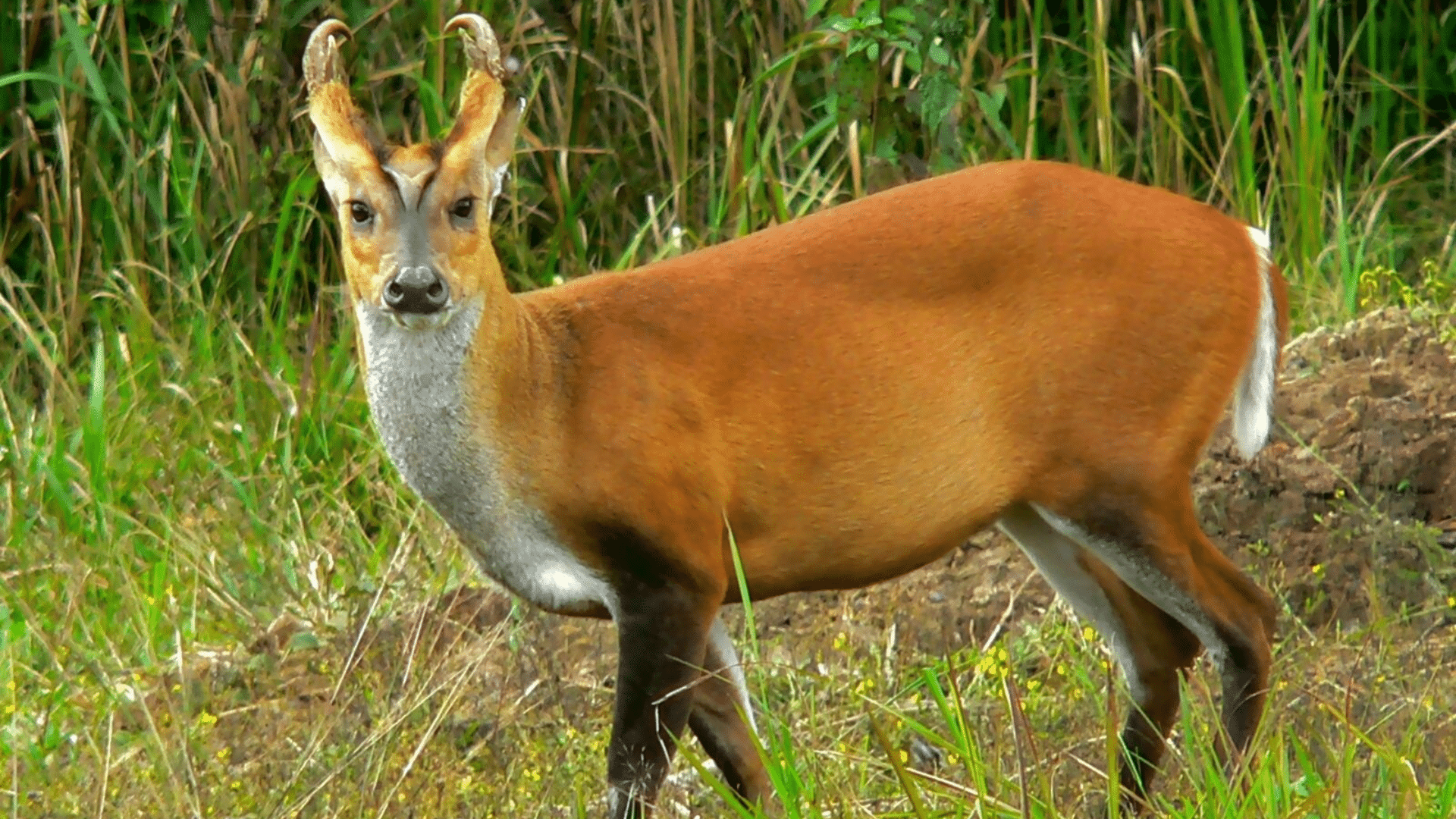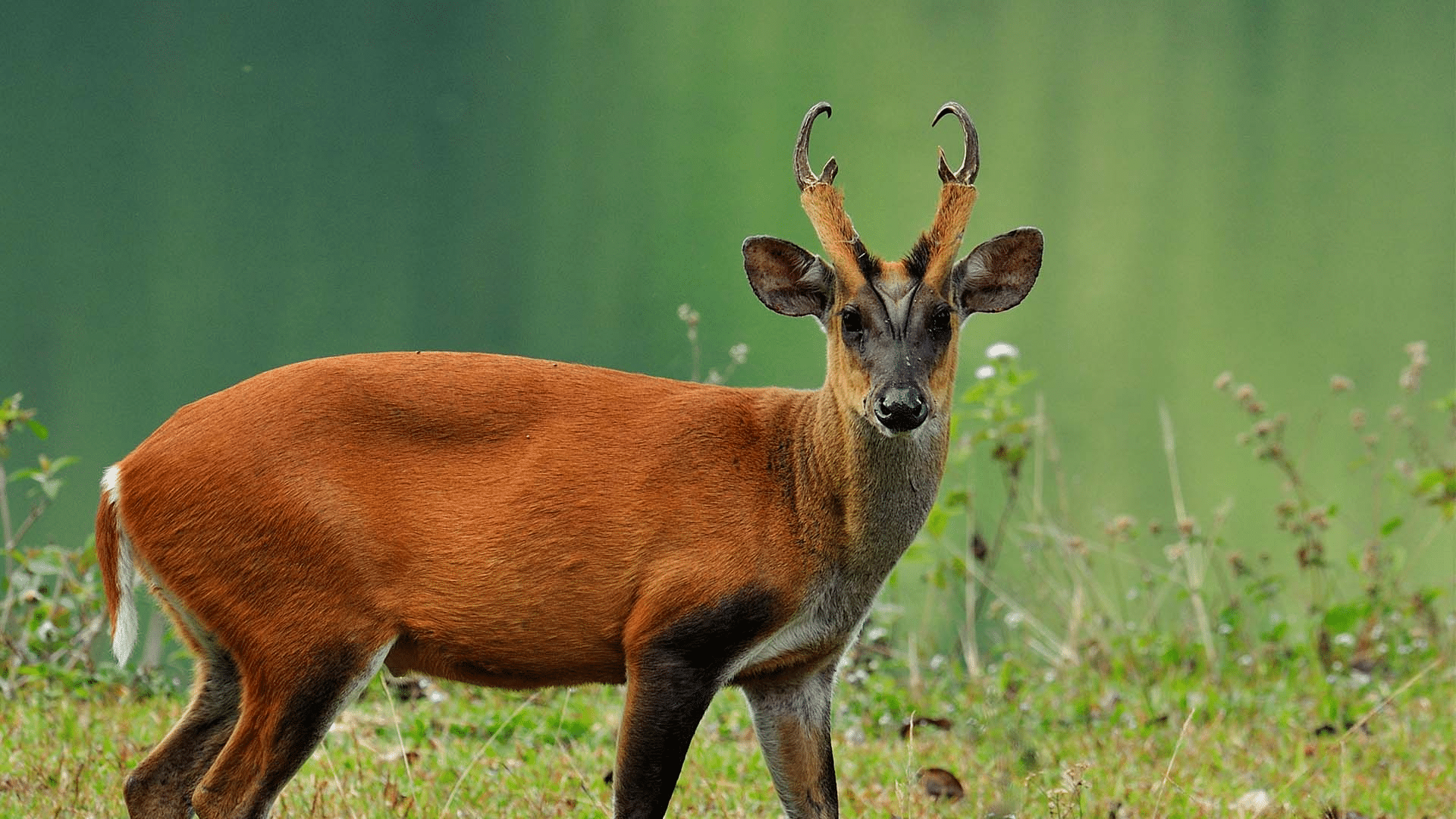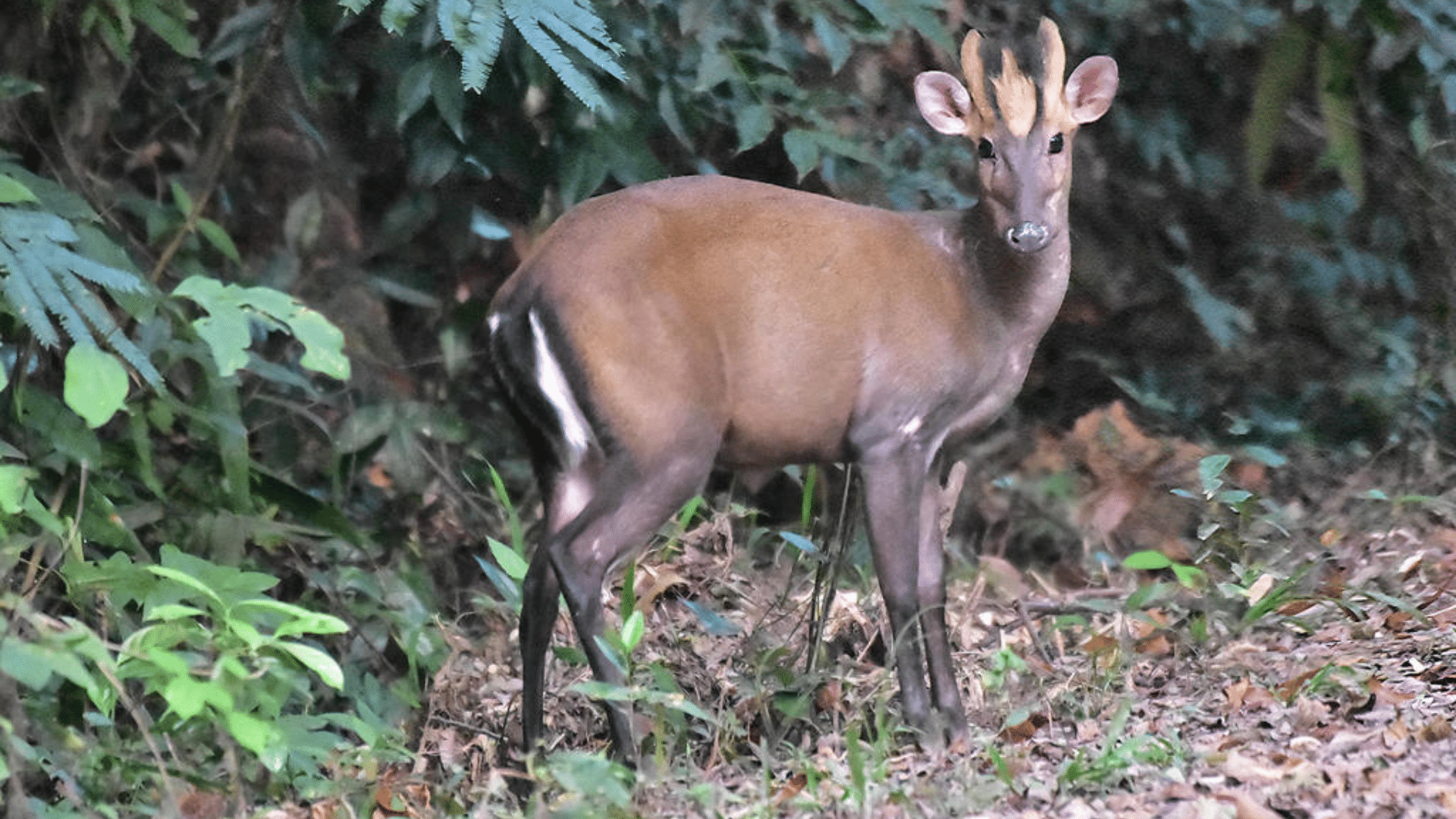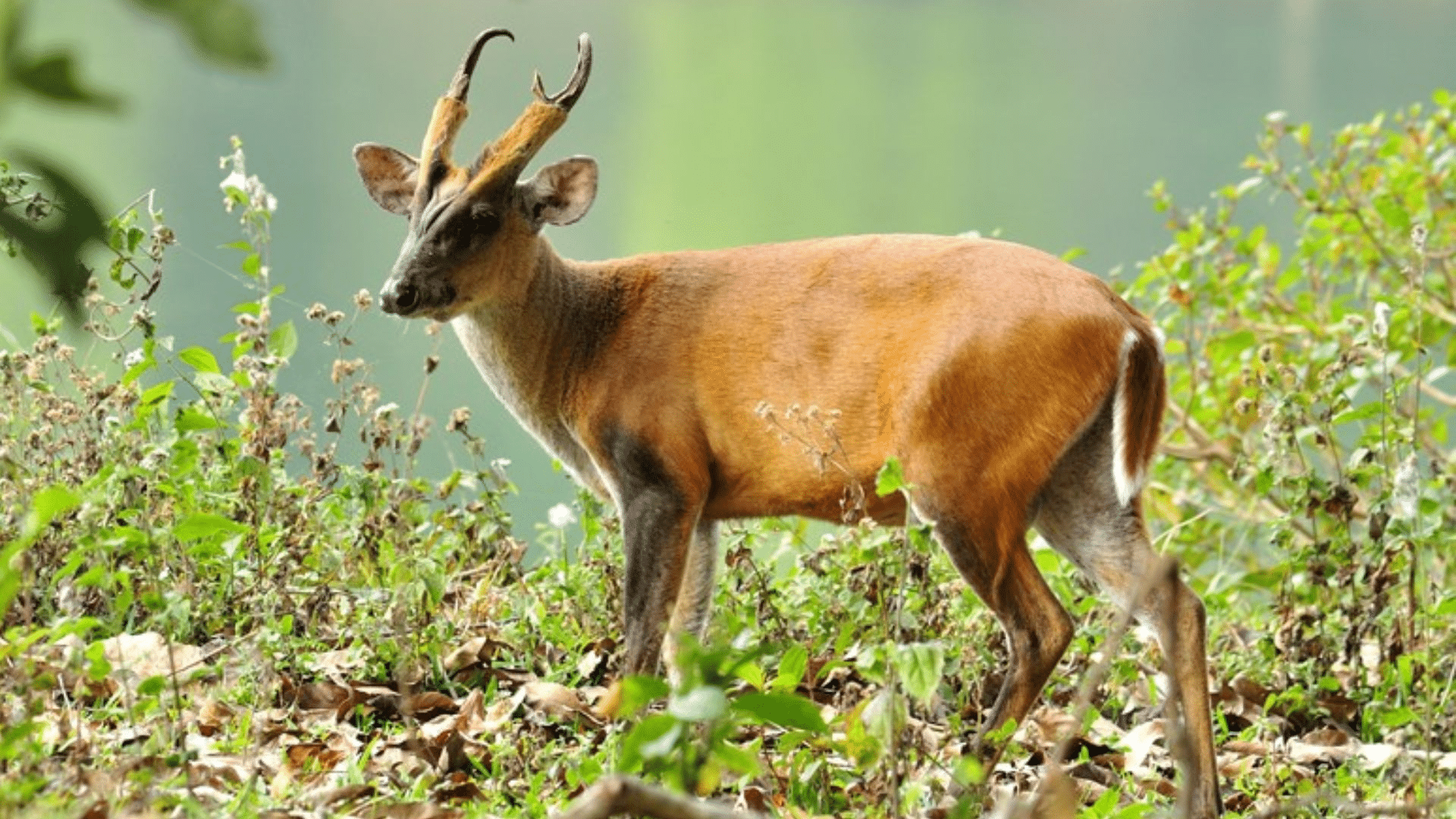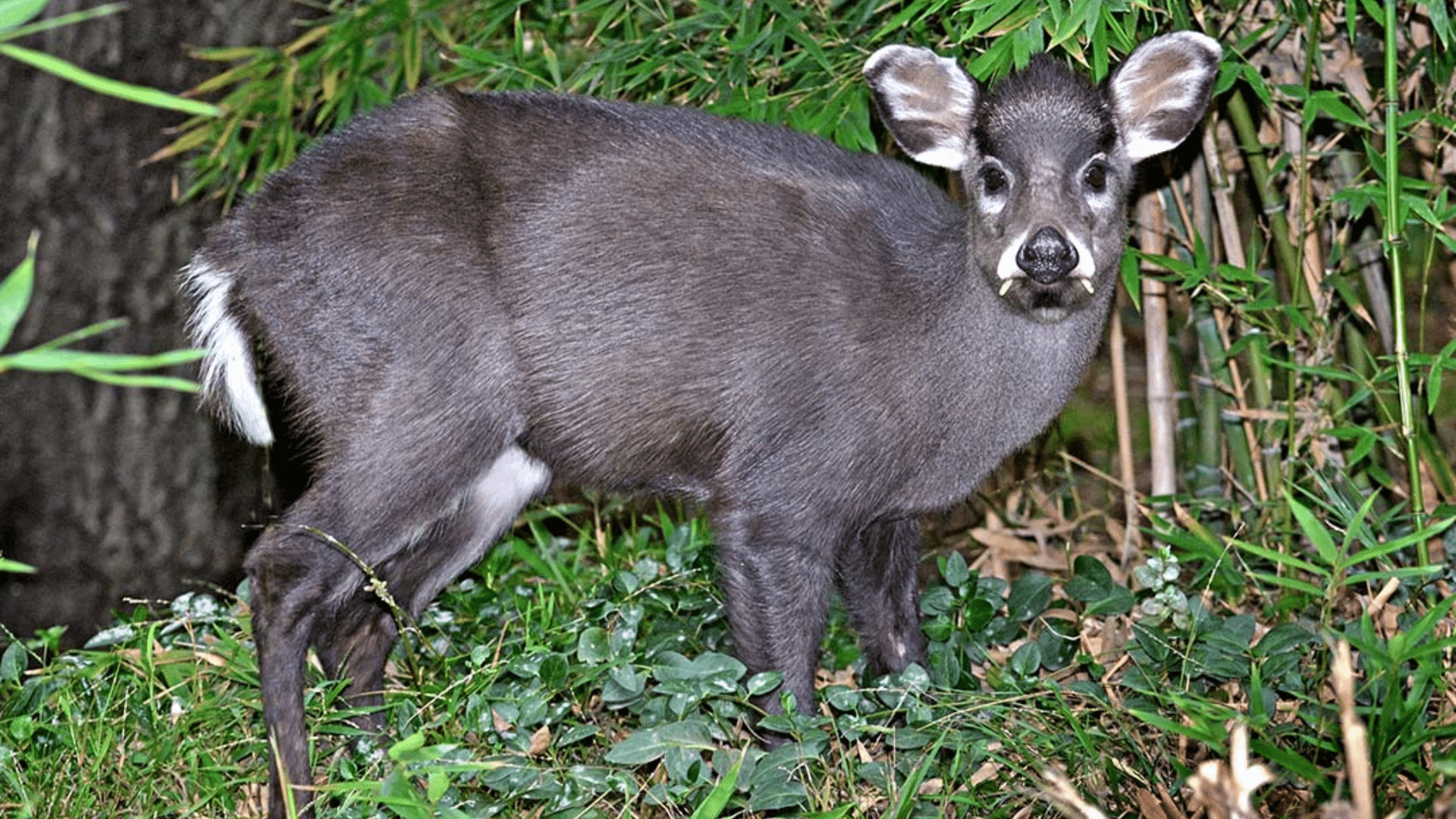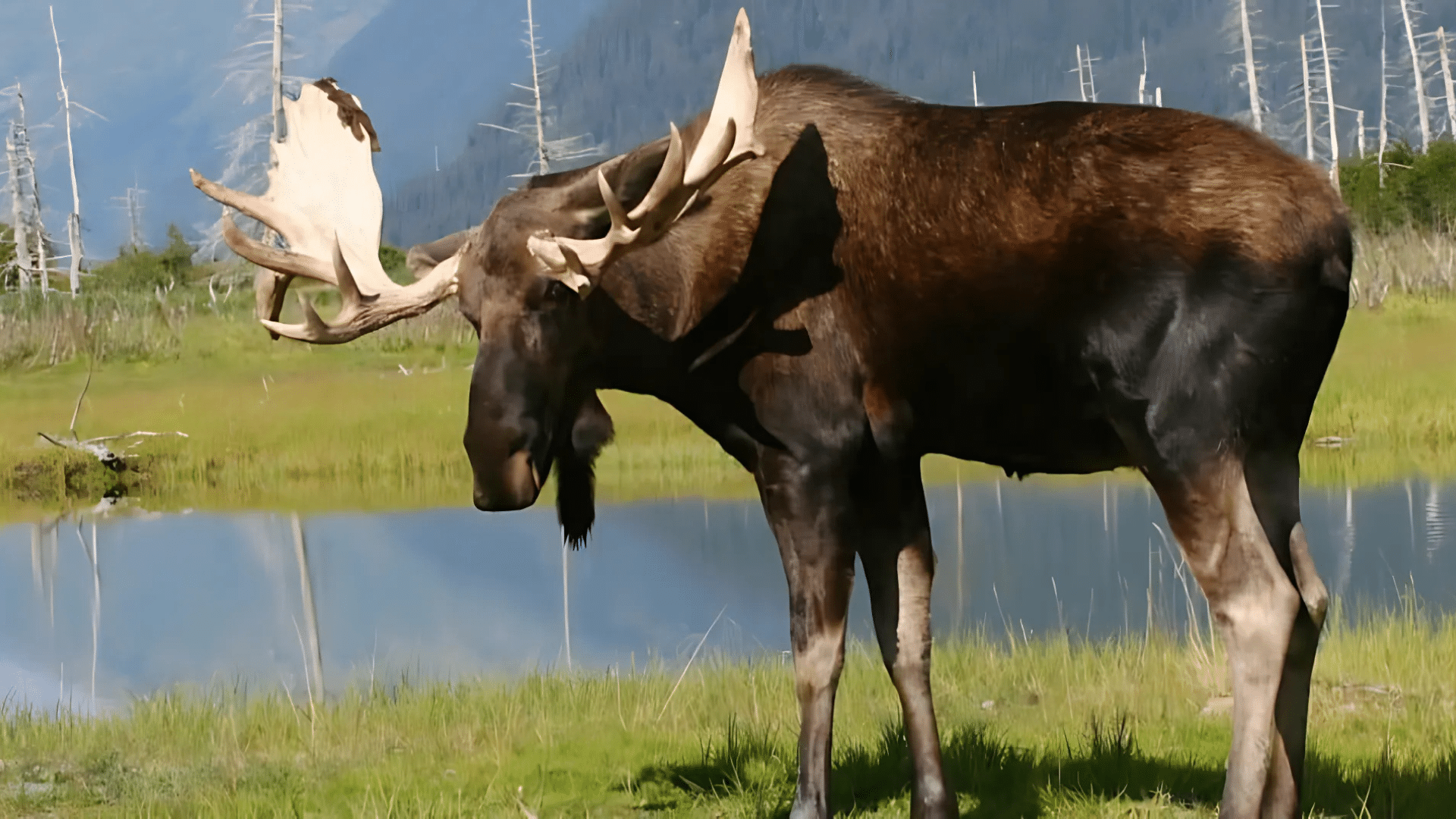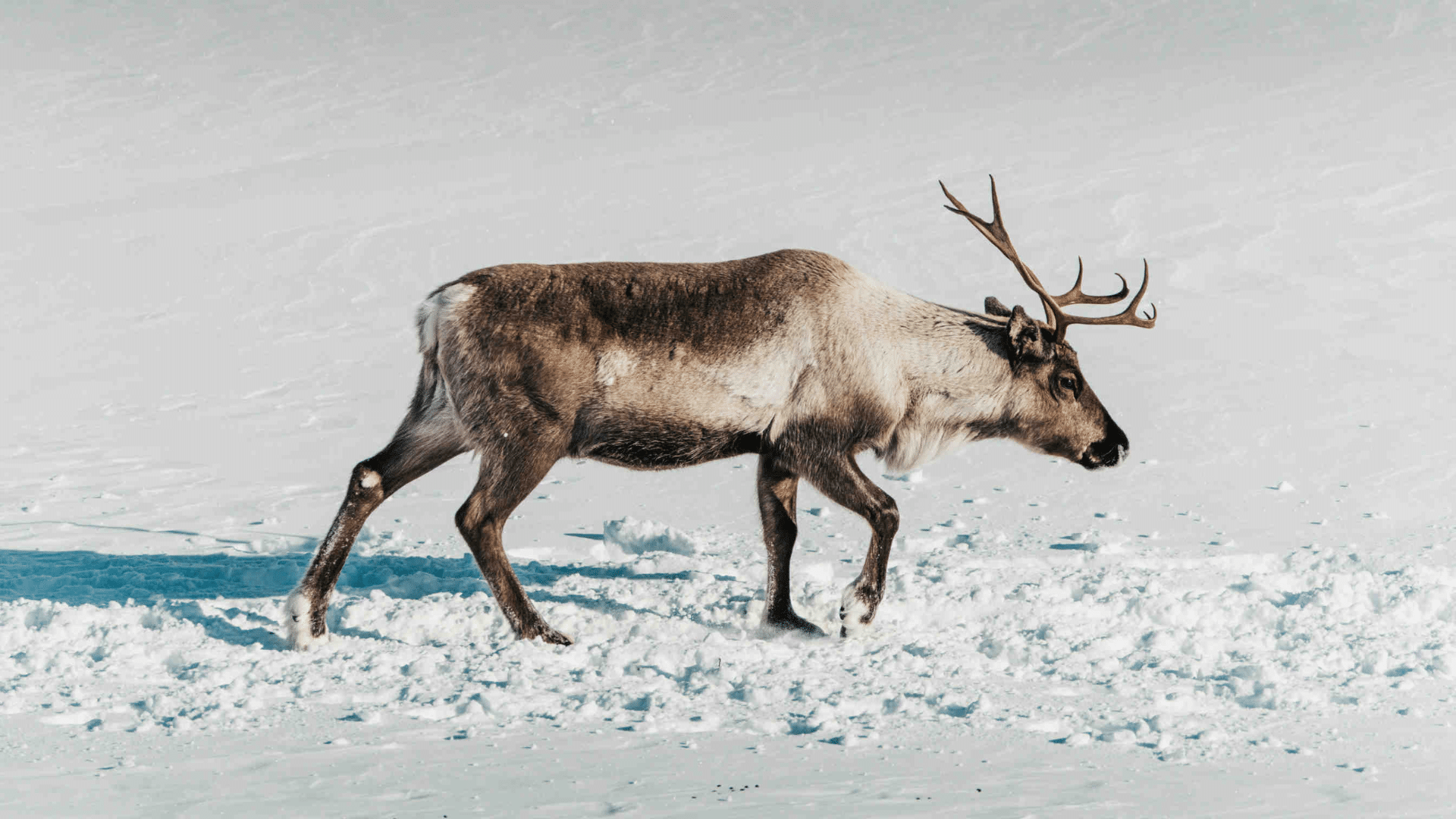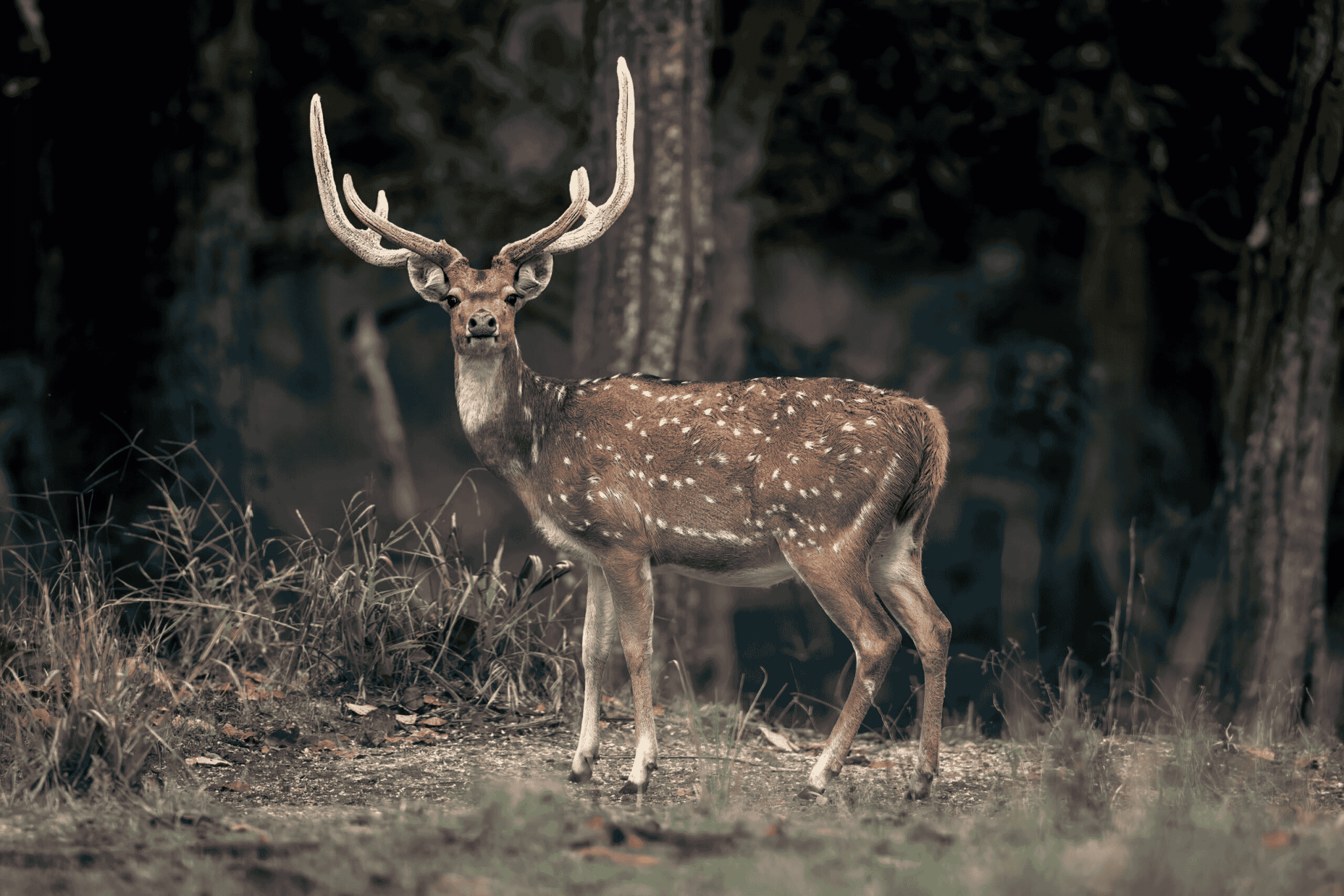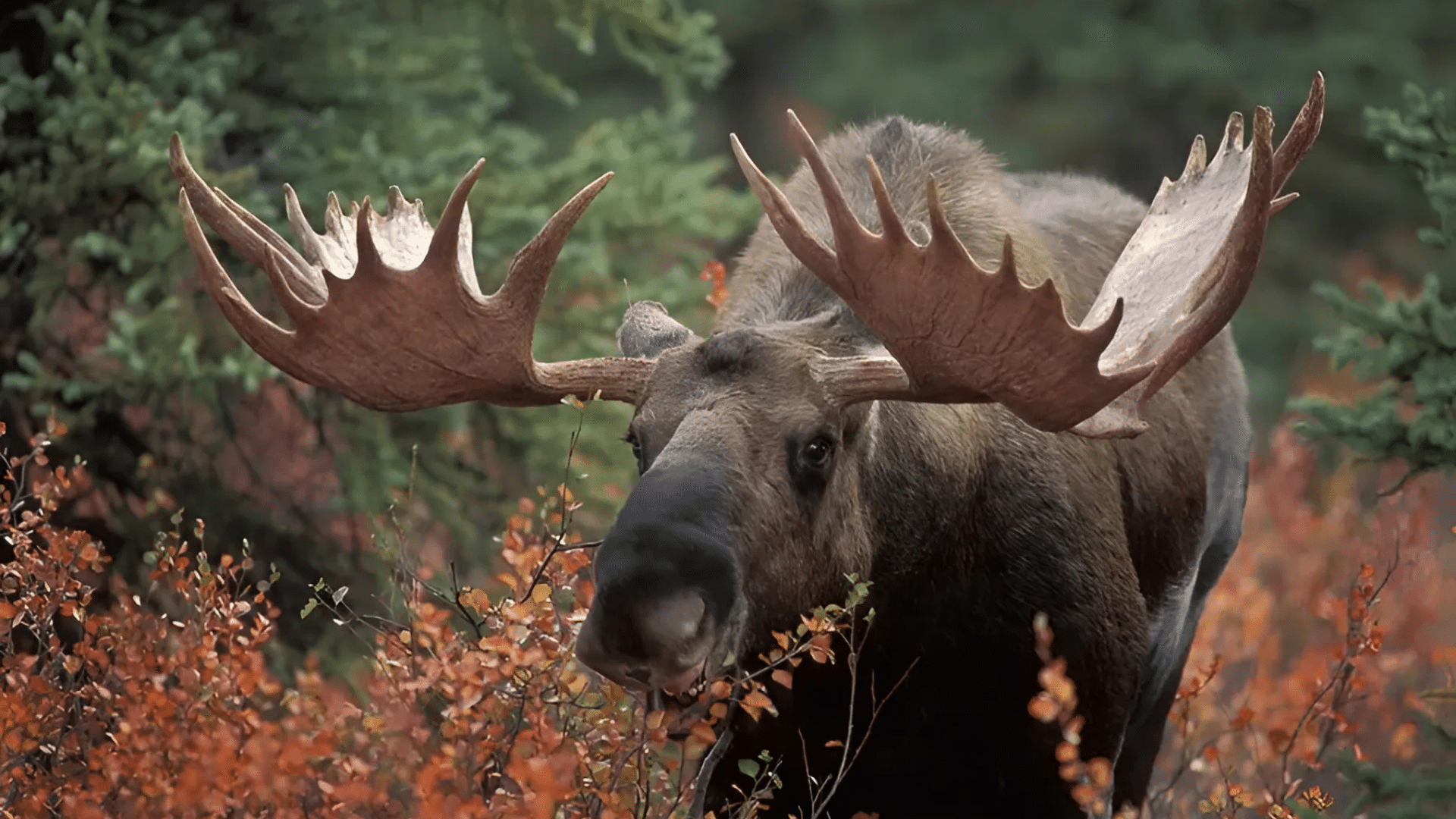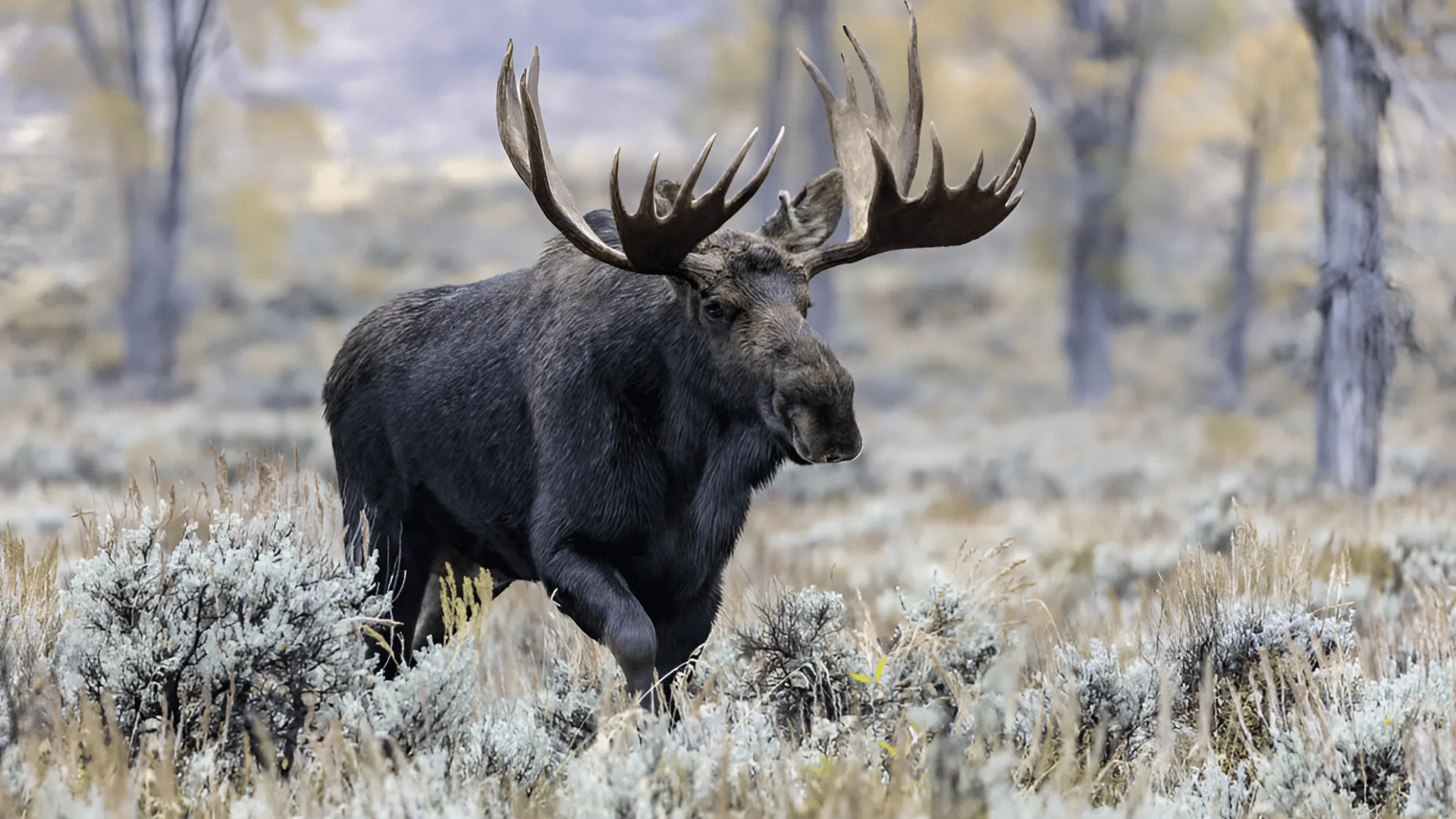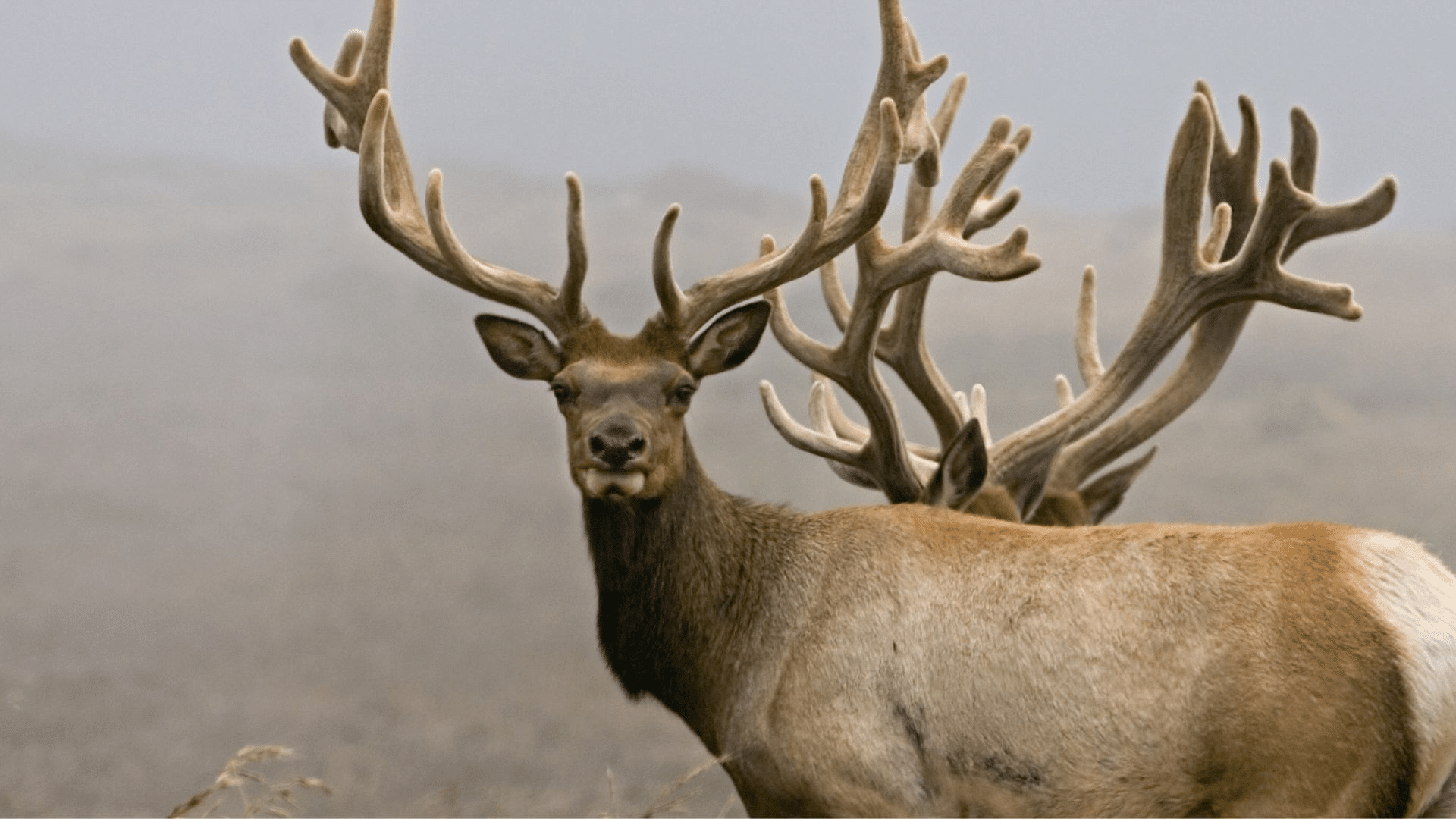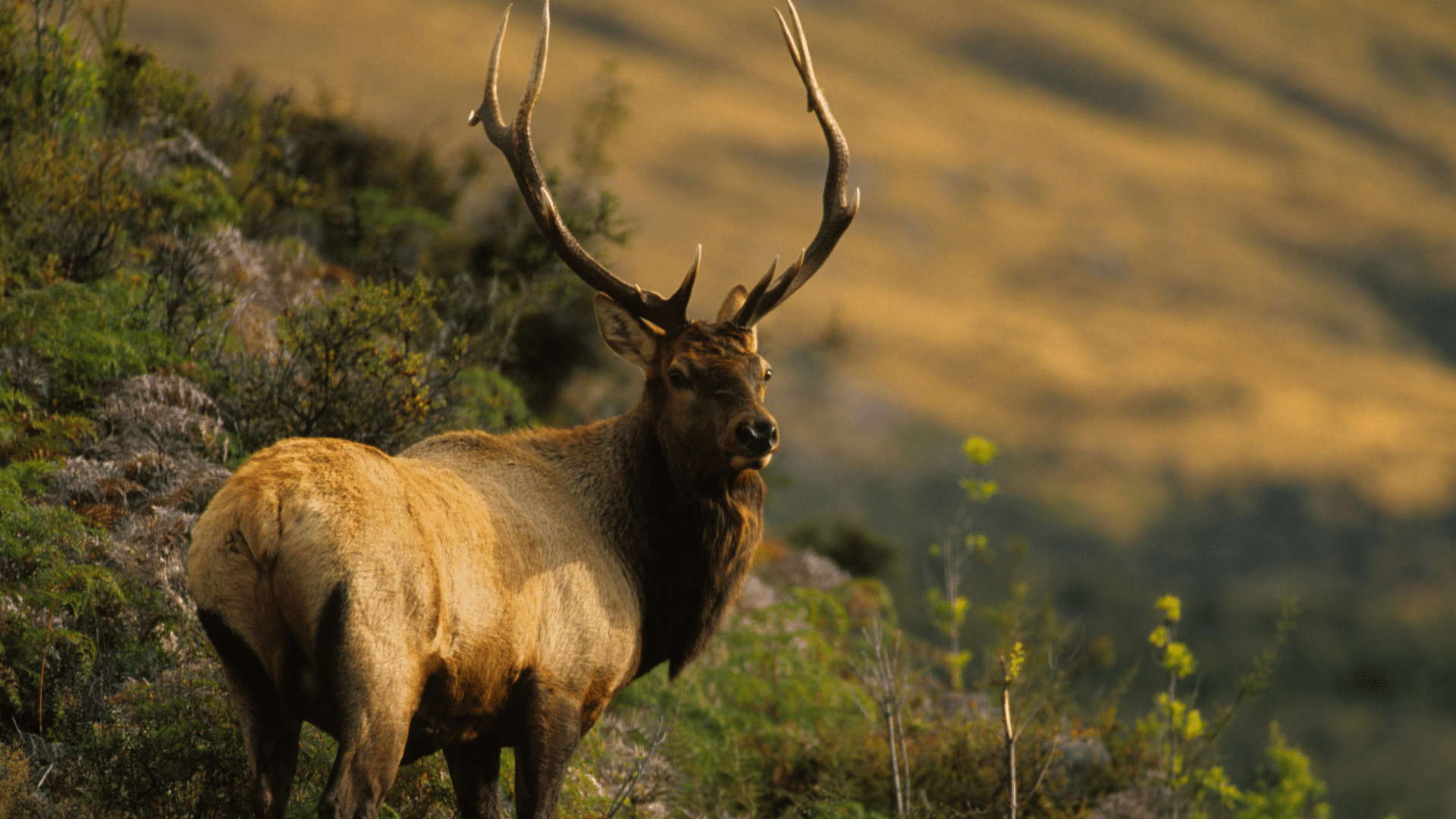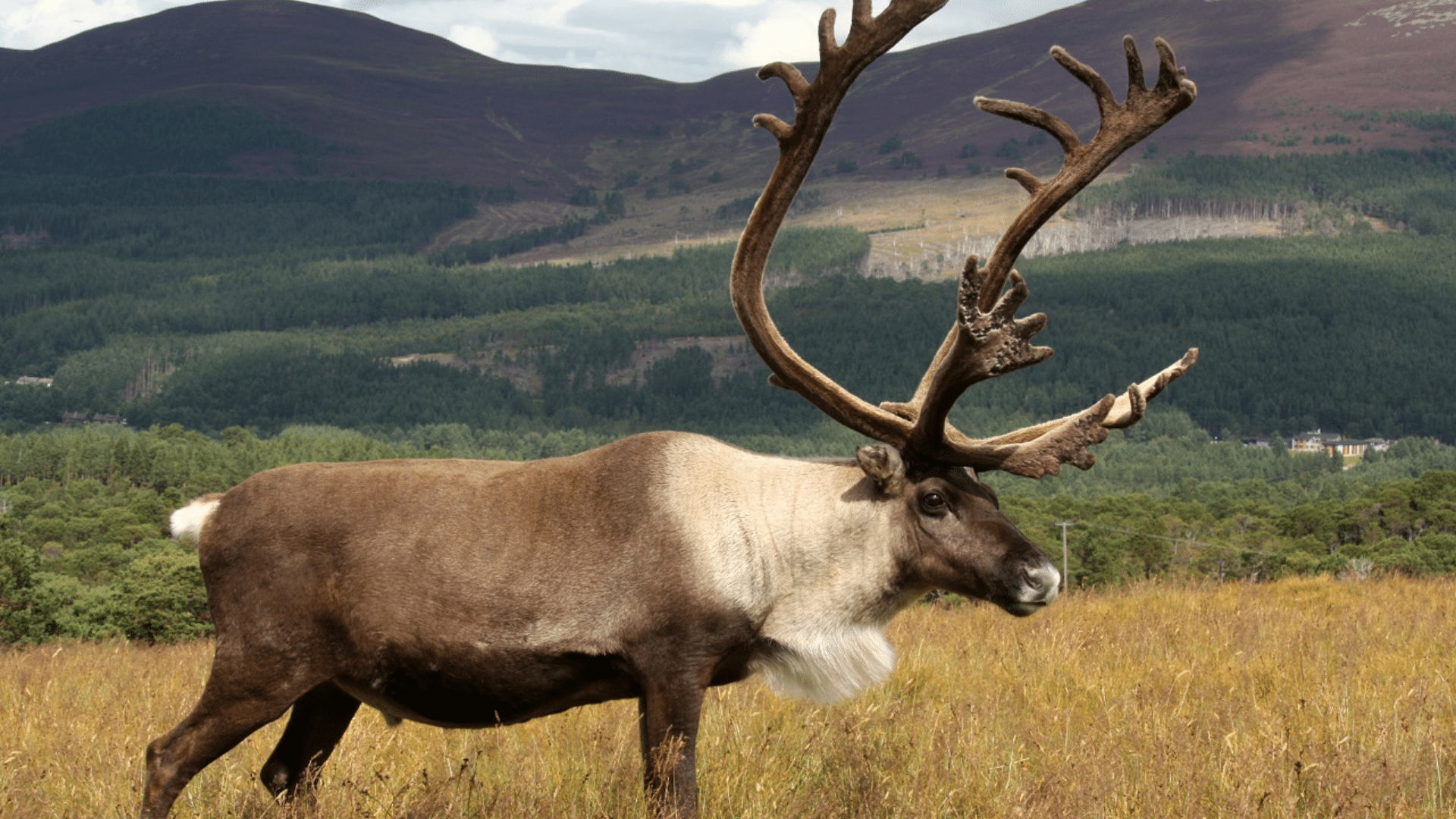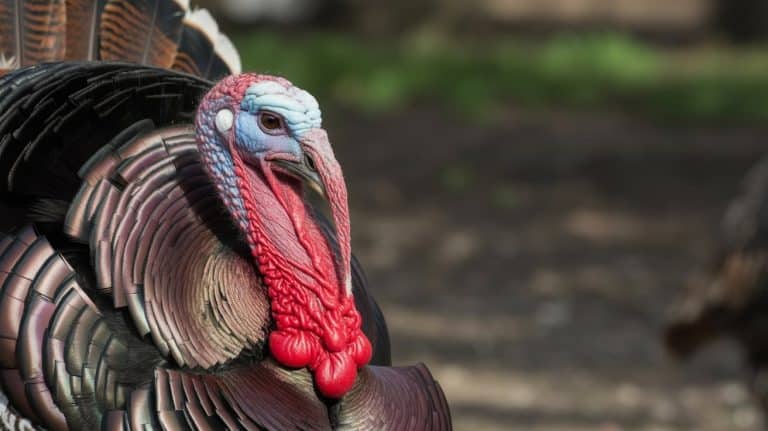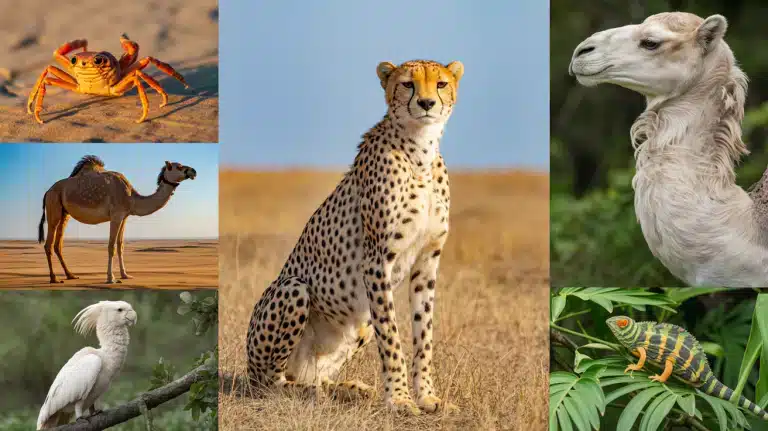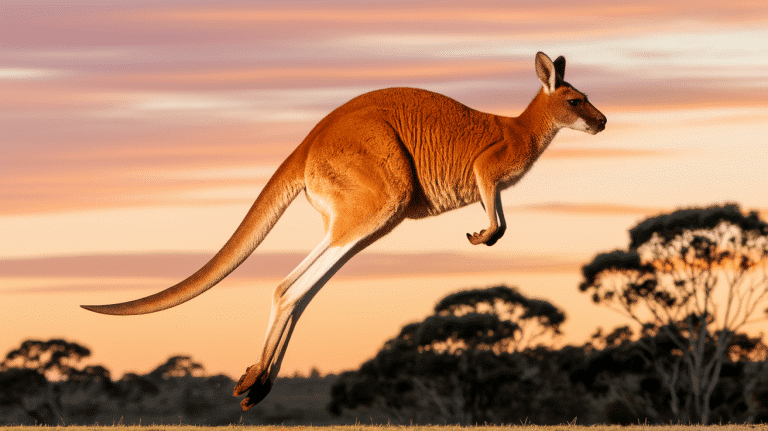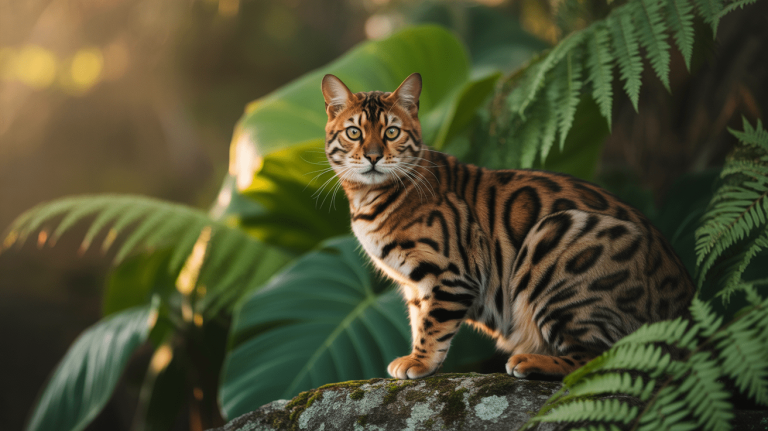Antlers stand as nature’s crowns, branched, bony structures that grow from the heads of certain mammals, primarily in the deer family.
Unlike horns, antlers shed and regrow annually, often becoming more complex over time.
These remarkable features play vital roles in survival, helping attract mates and defend against rivals while also striking a natural beauty that draws wildlife observers worldwide.
This blog covers both common and rare species, providing information about their environments, characteristics, and what makes their antlers distinctive.
Let’s examine these magnificent antlered animals in their natural habitats.
What are Antlers and Why Do Animals Grow Them?
Antlers are bone structures that grow from the skulls of animals in the Cervidae family, including deer, elk, moose, and caribou. They are different from permanent horns.
- In mating rituals, males often use their antlers to compete for females, displaying their size and strength during the breeding season.
- Antlers can be used to protect against predators or to fight off competing males.
- Larger or more complex antlers often indicate health, maturity, and genetic fitness, which helps in attracting mates.
- Antlers typically grow in spring and summer, covered in a soft tissue called “velvet” that supplies nutrients.
- Shedding occurs in late winter or early spring, when the antlers naturally fall off and begin to regrow, marking the start of the yearly cycle.
- In most species, only males grow antlers, except for caribou (reindeer), where both males and females can have them.
- Rapid growth rate: Antlers are among the fastest-growing tissues in the animal kingdom, growing up to an inch per day in some cases.
Antlers are shed and regrown annually, often becoming larger and more branched with age.
North American & Arctic Giants
From towering moose to iconic white-tailed deer, North America is home to some of the most recognizable antlered animals on the planet.
These giants roam vast forests, wetlands, and tundras, using their massive antlers for mating battles, survival, and display. This section highlights the true kings of the northern wilderness.
1. Moose
The moose is the largest of the antlered animals on Earth. Its enormous antlers, shaped like broad palms, grow anew each year and are used by bulls to impress females and fend off rivals.
Origin: North America and Northern Europe
Region and Habitat: Boreal forests, marshlands, and cold woodlands
Scientific Name:Alces alces
Fun Fact: A moose’s antlers can weigh up to 40 pounds and are shed every winter.
2. White-Tailed Deer
Graceful and adaptive, the white-tailed deer is one of the most widespread antlered species in the Americas. Their sleek bodies and iconic tail flicks make them a favorite among wildlife watchers. Bucks grow branched antlers used in short duels during the mating season.
Origin: North and Central America
Region and Habitat: Forests, grasslands, and wetlands
Scientific Name:Odocoileus virginianus
Fun Fact: Only males grow antlers, which are used for sparring during the mating season.
3. Reindeer (Caribou)
Known for their association with winter and holiday folklore, reindeer are unique in that both males and females grow antlers. Their rugged antlers help them dig through snow to find food and are essential for survival in the harsh tundra.
Origin: Arctic and Subarctic regions
Region and Habitat: Tundra and boreal forests
Scientific Name:Rangifer tarandus
Fun Fact: Both males and females grow antlers, a rare trait among deer.
4. Elk (Wapiti)
Elk, or wapiti, are known for their loud bugling calls and graceful antlers that rise in majestic arcs. During the rut, bulls compete using these impressive antlers, which can grow incredibly fast and shed each winter.
Origin: North America and Eastern Asia
Region and Habitat: Woodlands, forests, and grasslands
Scientific Name:Cervus canadensis
Fun Fact: Elk antlers can grow up to an inch per day during the summer.
5. Mule Deer
Named after their large, mule-like ears, mule deer are easy to recognize by their distinctive antler shape, which forks as it grows. They thrive in western terrains and often migrate between elevations seasonally.
Origin: Western North America
Region and Habitat: Mountain ranges, deserts, and forests
Scientific Name:Odocoileus hemionus
Fun Fact: Their antlers branch in a unique forked pattern, unlike other deer species.
Eurasian Antlered Icons
Europe and Asia offer a beautiful blend of elegance and strength in their antlered species.
Whether it’s the red deer bellowing through Scottish highlands or the delicate roe deer tiptoeing through woodlands, these animals showcase nature’s regal craftsmanship.
6. Red Deer
The red deer is one of Europe’s most iconic animals. Known for its reddish-brown coat and impressive branching antlers, the red deer is a symbol of wilderness and royalty. Males bellow and clash during the rutting season, creating a dramatic display in forested regions.
Origin: Europe, parts of Asia, and North Africa
Region and Habitat: Woodlands, grasslands, and uplands
Scientific Name:Cervus elaphus
Fun Fact: Red deer antlers can grow over three feet long and are shed each spring.
7. Sika Deer
Sika deer are native to East Asia but have been introduced to Europe and New Zealand. With their spotted coats and compact antlers, they are both elegant and adaptable. Males use their antlers in dramatic sparring matches during the fall rut.
Origin: Japan, China, Korea, and parts of Russia
Region and Habitat: Forests, lowlands, and grasslands
Scientific Name:Cervus nippon
Fun Fact: Despite their small size, sika stags are extremely vocal and aggressive during the rut.
8. Fallow Deer
Fallow deer are known for their broad, flattened antlers, often described as looking like a hand with outstretched fingers. These deer have been introduced widely in Europe and are popular in parks for their ornamental beauty.
Origin: Native to Turkey and the Middle East; introduced to Europe
Region and Habitat: Deciduous forests and open woodlands
Scientific Name:Dama dama
Fun Fact: Fallow deer come in several coat colors ranging from white to dark brown, and have unique palmate antlers.
9. Roe Deer
Roe deer are small, agile, and incredibly graceful. They have short, upright antlers with usually three points on each side. These deer are common across Europe and are known for their secretive and solitary nature.
Origin: Europe and parts of Asia
Region and Habitat: Mixed woodland, farmlands, and grasslands
Scientific Name:Capreolus capreolus
Fun Fact: Roe deer males shed their antlers in late autumn and regrow them in velvet through the winter, opposite of most deer!
10. Siberian Musk Deer
Though not a true deer with antlers, the Siberian musk deer earns a place for its fascinating, long, fang-like tusks. While it doesn’t grow antlers, it’s often mistaken for an antlered species due to its small, deer-like appearance and rarity.
Origin: Siberia, Mongolia, and Northeast Asia
Region and Habitat: Mountain forests and taiga regions
Scientific Name:Moschus moschiferus
Fun Fact: Males use their tusks (instead of antlers) to fight during mating season.
Rare and Exotic Antlered Species
Some antlered animals are hidden away in remote islands or isolated forests, making them all the more mysterious.
With limited populations and unique antler shapes, these lesser-known species carry both rarity and wonder. This group spotlights the world’s most elusive antlered wildlife.
11. Barasingha (Swamp Deer)
Barasingha, also known as the swamp deer, is distinguished by its unique antlers, which can have more than twelve tines. These gentle giants roam swampy grasslands and are a conservation success story in India.
Origin: Indian subcontinent
Region and Habitat: Swamps, wetlands, and grassy floodplains
Scientific Name:Rucervus duvaucelii
Fun Fact: Its name “barasingha” means “twelve-horned” in Hindi, referring to its multi-tined antlers.
12. Pere David’s Deer
Père David’s deer is a distinctive species characterized by its long tail, wide hooves, and antlers that sweep backward. Once extinct in the wild, they now thrive in protected reserves thanks to conservation efforts.
Origin: China
Region and Habitat: Marshlands and wetlands (now mainly in reserves)
Scientific Name:Elaphurus davidianus
Fun Fact: This deer species is often referred to as “the swimming deer” due to its affinity for water.
13. Rusa Deer (Sambar Deer)
The Rusa deer is a shy and nocturnal species known for its rugged three-toned antlers. Found primarily in islands and coastal regions, it’s an important prey species for predators such as tigers.
Origin: Indonesia and Southeast Asia
Region and Habitat: Tropical forests and swamps
Scientific Name:Rusa timorensis
Fun Fact: Rusa deer communicate through deep bellows and scent markings during the rut.
14. Sambar Deer
The sambar is one of the largest deer species in Asia, characterized by its rugged and thick antlers, which typically have three points. These mighty antlers are used to ward off predators and compete during mating season.
Origin: Indian subcontinent and Southeast Asia
Region and Habitat: Dense forests and hilly terrain
Scientific Name:Rusa unicolor
Fun Fact: Sambar stags will decorate their antlers with foliage as part of display behavior during rutting.
15. Bawean Deer
A critically endangered species, the Bawean deer is native only to Bawean Island in Indonesia. Males grow small but sharp antlers, and the species remains elusive in the wild.
Origin: Bawean Island, Indonesia
Region and Habitat: Lowland tropical forests
Scientific Name:Axis Kuhlii
Fun Fact: It is one of the rarest deer species in the world, with fewer than 250 mature individuals remaining.
Antlered Animals from the Americas
Beyond the big names like elk and moose, the Americas are home to a rich mix of regional antlered species. From the agile Coues deer to the tropical red brocket, these animals show how antlers evolve across diverse environments.
16. Columbian Black-Tailed Deer
A subspecies of mule deer, the Columbian black-tailed deer is characterized by elegant antlers and a distinctive dark tail. It is commonly spotted along the Pacific Northwest’s coastal forests.
Origin: Pacific Northwest, North America
Region and Habitat: Temperate rainforests and coastal mountains
Scientific Name:Odocoileus hemionus columbianus
Fun Fact: These deer use their agile jumping ability to evade predators in thick forest underbrush.
17. Coues Deer
A smaller cousin of the white-tailed deer, the Coues deer thrives in high-altitude deserts. Despite their petite frame, bucks develop sharp, forked antlers suited for dueling during mating season.
Origin: Southwestern United States and Northern Mexico
Region and Habitat: Mountain deserts and oak woodlands
Scientific Name:Odocoileus virginianus couesi
Fun Fact: Known as the “Grey Ghost” due to their elusive nature and muted coat color.
18. Yucatán Brown Brocket
This shy and solitary deer is native to Central America. Unlike larger deer, brockets have simple, spike-like antlers and inhabit dense tropical forests, where stealth is more important than size.
Origin: Mexico, Guatemala, Belize
Region and Habitat: Rainforests and dense jungles
Scientific Name:Mazama pandora
Fun Fact: Males grow short, straight antlers and rely more on camouflage than combat.
19. Central American Red Brocket
Another small tropical deer, the red brocket’s reddish coat blends perfectly with the forest floor. Males have slender, straight antlers and are mostly nocturnal.
Origin: Central and South America
Region and Habitat: Tropical lowland forests
Scientific Name:Mazama americana
Fun Fact: Red brockets are highly territorial and often communicate with one another using foot stomps.
20. Pampas Deer
Native to South America’s grasslands, the pampas deer features thin, forked antlers and a gentle demeanor. Though once abundant, their populations have declined due to habitat loss.
Origin: Argentina, Brazil, Paraguay, Uruguay
Region and Habitat: Open pampas grasslands and savannas
Scientific Name:Ozotoceros bezoarticus
Fun Fact: Males grow slender, upright antlers and perform a “stotting” leap when alarmed.
Endangered and Isolated Antlered Species
Antlers aren’t just common traits; they’re also found in some of the world’s most endangered deer.
Living in limited ranges and threatened by human activity, these species are as vulnerable as they are majestic. Discover the antlered animals fighting for survival.
21. Calamian Deer
This elusive deer is found only on a few islands in the Philippines. With a short stature and three-tined antlers, the Calamian deer is nocturnal and extremely shy, making it a rare sight even in its native range.
Origin: Calamian Islands, Philippines
Region and Habitat: Grasslands and forest edges
Scientific Name:Axis calamianensis
Fun Fact: Unlike many deer, both males and females make whistling sounds to communicate.
22. Philippine Spotted Deer
One of the most endangered deer species in the world, this small forest dweller is characterized by its short, unbranched antlers and a dark coat speckled with white spots. It’s often called the “Visayan spotted deer.”
Origin: Visayan Islands, Philippines
Region and Habitat: Dense montane and lowland forests
Scientific Name:Rusa alfredi
Fun Fact: Conservation efforts have increased their population through breeding programs in sanctuaries.
23. Andean Deer (Taruca)
This high-altitude deer inhabits the Andes Mountains and is recognized for its small, forked antlers and dense coat. It plays an essential cultural role in indigenous communities.
Origin: Andes Mountains, South America
Region and Habitat: Rocky slopes and high-altitude grasslands
Scientific Name:Hippocamelus antisensis
Fun Fact: Taruca are excellent climbers and forage in areas above 4,000 meters.
24. Huemul (South Andean Deer)
A national symbol of Chile, the huemul is a stocky, short-legged deer with simple, spike-like antlers. It’s critically endangered due to habitat loss and the introduction of predators.
Origin: Chile and Argentina
Region and Habitat: Patagonian forests and mountain slopes
Scientific Name:Hippocamelus bisulcus
Fun Fact: The huemul appears on Chile’s national coat of arms.
25. Giant Muntjac
Discovered only in the 1990s, the giant muntjac is a rare and elusive forest deer native to Southeast Asia. It sports short, unbranched antlers and is critically endangered due to deforestation.
Origin: Laos and Vietnam
Region and Habitat: Dense mountain forests
Scientific Name:Muntiacus vuquangensis
Fun Fact: It was discovered as recently as 1994, making it one of the most recently identified deer species.
Muntjacs and Other Antler Oddities
Not all antlers are grand and branching; some are short, sharp, and paired with surprising features like fangs!
These small but mighty deer come from the forests of Asia and prove that antlers come in all shapes and functions. Let’s meet the rebels of the antlered world.
26. Indian Muntjac (Barking Deer)
This small forest-dwelling deer gets its nickname from its loud bark-like calls. Males grow short, simple antlers and are fiercely territorial, often engaging in duels despite their small size.
Origin: South and Southeast Asia
Region and Habitat: Dense forests and bamboo groves
Scientific Name:Muntiacus muntjak
Fun Fact: It’s the only deer species where males have both antlers and tusk-like canines!
27. Reeves’s Muntjac
A tiny deer introduced from China to parts of Europe, the Reeves’s muntjac thrives in wooded areas and gardens. Its short antlers are used more for posture than combat.
Origin: China and Taiwan
Region and Habitat: Shrublands, forest edges, and suburban parks
Scientific Name:Muntiacus reevesi
Fun Fact: Despite their size, they’re known to bark loudly when alarmed—startling for a creature under two feet tall!
28. Fea’s Muntjac
One of the rarest muntjac species, Fea’s muntjac is rarely seen and remains one of the least understood deer species. Males carry tiny spike-like antlers used mainly for display.
Origin: Thailand and Myanmar
Region and Habitat: Highland forests
Scientific Name:Muntiacus feae
Fun Fact: So little is known about this species that it’s been photographed fewer times than snow leopards.
29. Leaf Deer
One of the smallest deer in the world, the leaf deer gets its name because its body can be covered entirely by a single large leaf. Males have rudimentary antlers, typically measuring less than an inch in length.
Origin: Myanmar and parts of India
Region and Habitat: Cloud forests and high-altitude jungles
Scientific Name:Muntiacus putaoensis
Fun Fact: It was only discovered by scientists in 1997 and remains extremely elusive.
30. Tufted Deer
With prominent dark tufts on their heads and downward-pointing canine fangs, tufted deer look like something out of folklore. Their small, backward-leaning antlers are barely visible above the fur.
Origin: China and northern Myanmar
Region and Habitat: Mountain forests and river valleys
Scientific Name:Elaphodus cephalophus
Fun Fact: Males have both antlers and vampire-like fangs, making them one of the most visually unique deer species.
Cultural Legends & Myth-Inspired Antlered Animals
Antlers have long captured human imagination, appearing in myths, religious symbols, and ancient stories. Some animals are real, others symbolic, but all have left their mark on culture and lore.
31. Irish Elk (Extinct)
Although extinct for thousands of years, the Irish elk remains legendary for its record-breaking antlers, some of which spanned up to twelve feet in width. It’s a symbol of ancient grandeur and often appears in Celtic myths.
Origin: Europe and Central Asia
Region and Habitat: Open plains and woodlands
Scientific Name:Megaloceros giganteus
Fun Fact: Its antlers were the largest of any known deer, and fossil finds are often showcased in museums.
32. Reindeer (Symbolic Reentry)
Beyond biology, reindeer play a starring role in Christmas lore. With sleighs and Santa, these antlered animals became beloved worldwide thanks to stories, songs, and seasonal traditions.
Origin: Northern Europe and North America
Region and Habitat: Tundra and Arctic forests
Scientific Name:Rangifer tarandus
Fun Fact: The concept of flying reindeer pulling Santa’s sleigh was first popularized in a 1823 poem.
33. White Stag (Folklore)
The white stag isn’t a distinct species but rather a rare, often sacred variation of deer characterized by a pale coat. In mythology, it’s a symbol of purity, elusive wisdom, and transformation, especially in Celtic and Arthurian tales.
Origin: Europe
Region and Habitat: Mythical; based on albino or leucistic deer
Scientific Name: Varies (usually Cervus elaphus or Odocoileus virginianus)
Fun Fact: Sightings of white stags are seen as omens or divine messengers in many traditions.
34. Axis Deer (Chital)
Axis deer hold cultural and religious significance in Hinduism and are often associated with peace and grace. Their three-tined antlers and dotted coats make them especially revered in sacred Indian forests.
Origin: Indian subcontinent
Region and Habitat: Deciduous forests and grassy areas
Scientific Name:Axis axis
Fun Fact: Lord Shiva is often depicted with a chital in Hindu iconography.
Record-Holding Antlered Animals
Who has the widest antlers? The fastest-growing? The most unique shape? These species hold antler-related world records, earning them special recognition.
Meet the true champions of the antler world, each one a natural marvel in its own right.
35. Alaskan Moose
The Alaskan moose is the largest subspecies of moose and holds the world record for the widest antlers ever recorded in a living animal. Their crown-like headgear makes them the true kings of the North.
Origin: Alaska, Yukon, Western Canada
Region and Habitat: Cold forests, tundra, and river valleys
Scientific Name:Alces alces gigas
Fun Fact: The widest recorded moose antlers spanned over 6.5 feet from tip to tip.
36. Shiras Moose
Also known as the Shiras moose, this subspecies is the smallest of the North American moose. However, it still bears impressive antlers relative to its body size.
Origin: Rocky Mountains, USA
Region and Habitat: Montane forests and wetlands
Scientific Name:Alces alces shirasi
Fun Fact: Shiras moose antlers are more compact but extremely dense and heavy.
37. Tule Elk
The smallest elk subspecies, the tule elk, is native to California and has been successfully brought back from near extinction. Their antlers are shorter and less branched than those of larger elk.
Origin: California, USA
Region and Habitat: Grasslands, valleys, and marshes
Scientific Name:Cervus canadensis nannodes
Fun Fact: There were fewer than 30 tule elk in the wild in the 1870s; now there are thousands.
38. Roosevelt Elk
The largest elk subspecies by body mass, Roosevelt elk can reach over 1,000 pounds. Their thick and wide antlers help them command authority during the mating season.
Origin: Pacific Northwest, USA
Region and Habitat: Rainforests and river valleys
Scientific Name:Cervus canadensis roosevelti
Fun Fact: Despite their bulk, Roosevelt elk are surprisingly agile swimmers and can cross rivers easily.
39. Caribou (Fastest-Growing Antlers)
Caribou antlers grow exceptionally fast, sometimes over an inch per day during the summer months. Their intricate, branch-like design is one of the most recognizable in the deer family.
Origin: Circumpolar North
Region and Habitat: Arctic tundra and boreal forest
Scientific Name:Rangifer tarandus
Fun Fact: Caribou antlers grow faster than any other bone structure in the animal kingdom.
How Antlers Reflect Power and Beauty in The Animal Kingdom?
In the animal kingdom, antlers symbolize strength and status, showcasing both physical power and natural elegance during competition and mating displays.
- Among many species, only the strongest males grow the largest antlers, signaling their maturity, health, and ability to compete for mates.
- In many deer species, bucks use their antlers in ritualized fights during mating season, where the winner gains the right to breed.
- From Celtic warriors and Norse gods to Native American totems, antlers are seen as emblems of virility, protection, and spiritual power.
Summing It Up
Antlers are more than just striking headgear. They’re a powerful blend of biology and symbolism. Functionally, antlers help animals assert dominance, attract mates, and protect themselves in the wild.
But beyond their utility, antlers also carry a profound beauty that charms us. They’ve inspired myths, appeared in ancient art, and continue to symbolize nobility, wildness, and natural grace.
As we read about these antlered creatures from around the world, some common, some rare, it becomes clear that each has its own unique story, culture, and evolutionary design.
We’d love to hear from you! Which antlered animal amazed you the most? Was it the towering moose, the mythical white stag, or a lesser-known deer like the muntjac?

